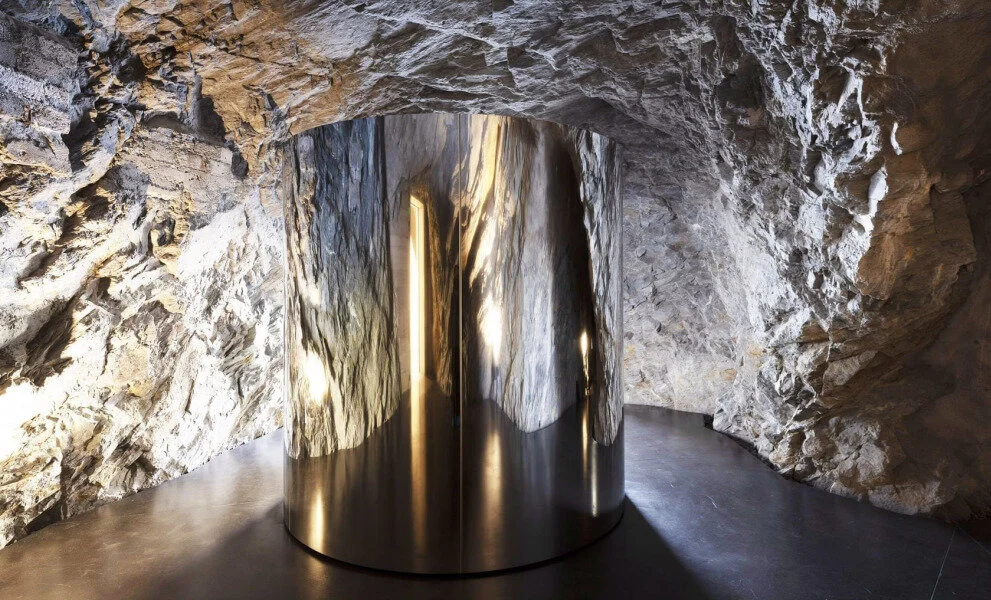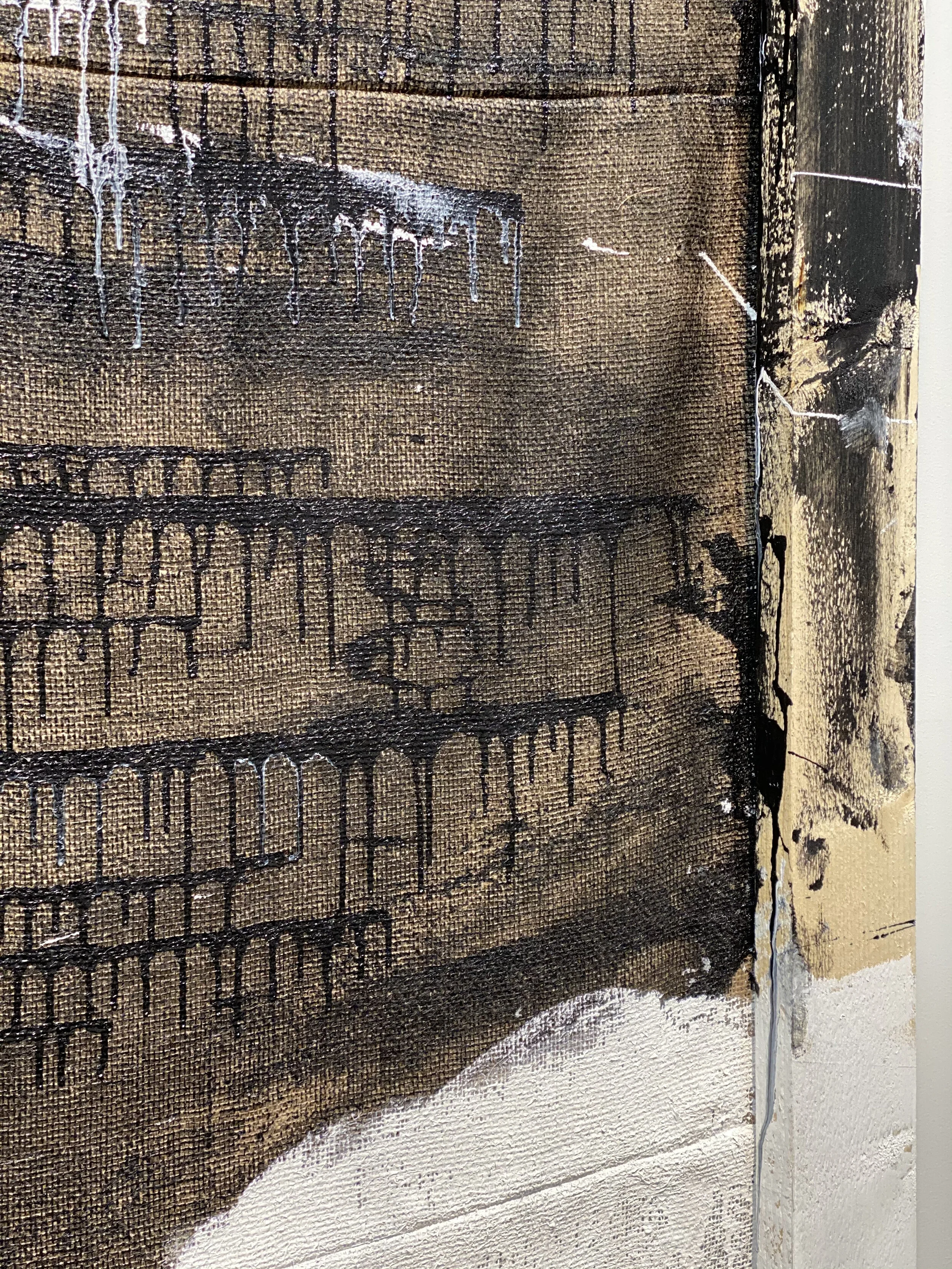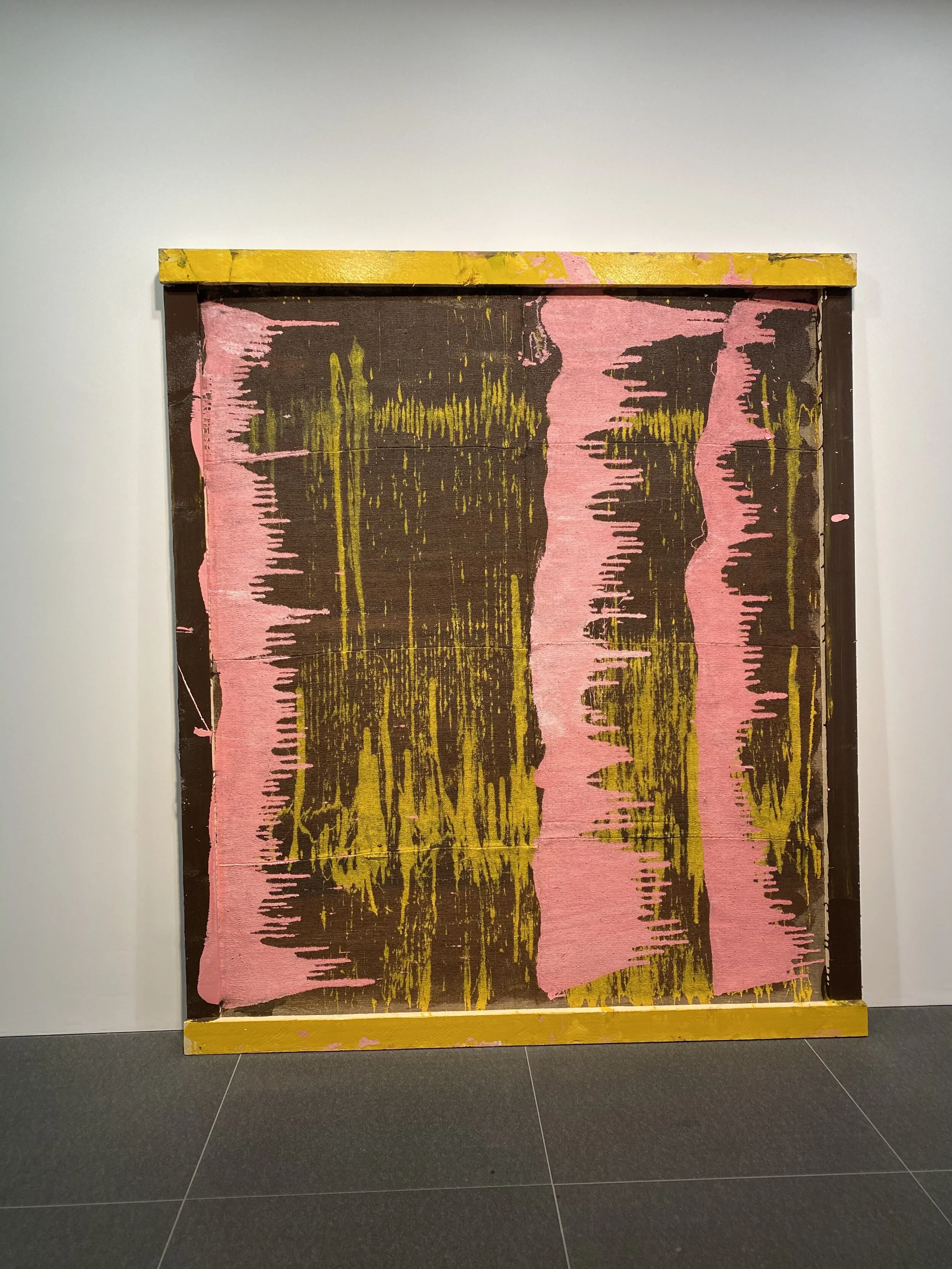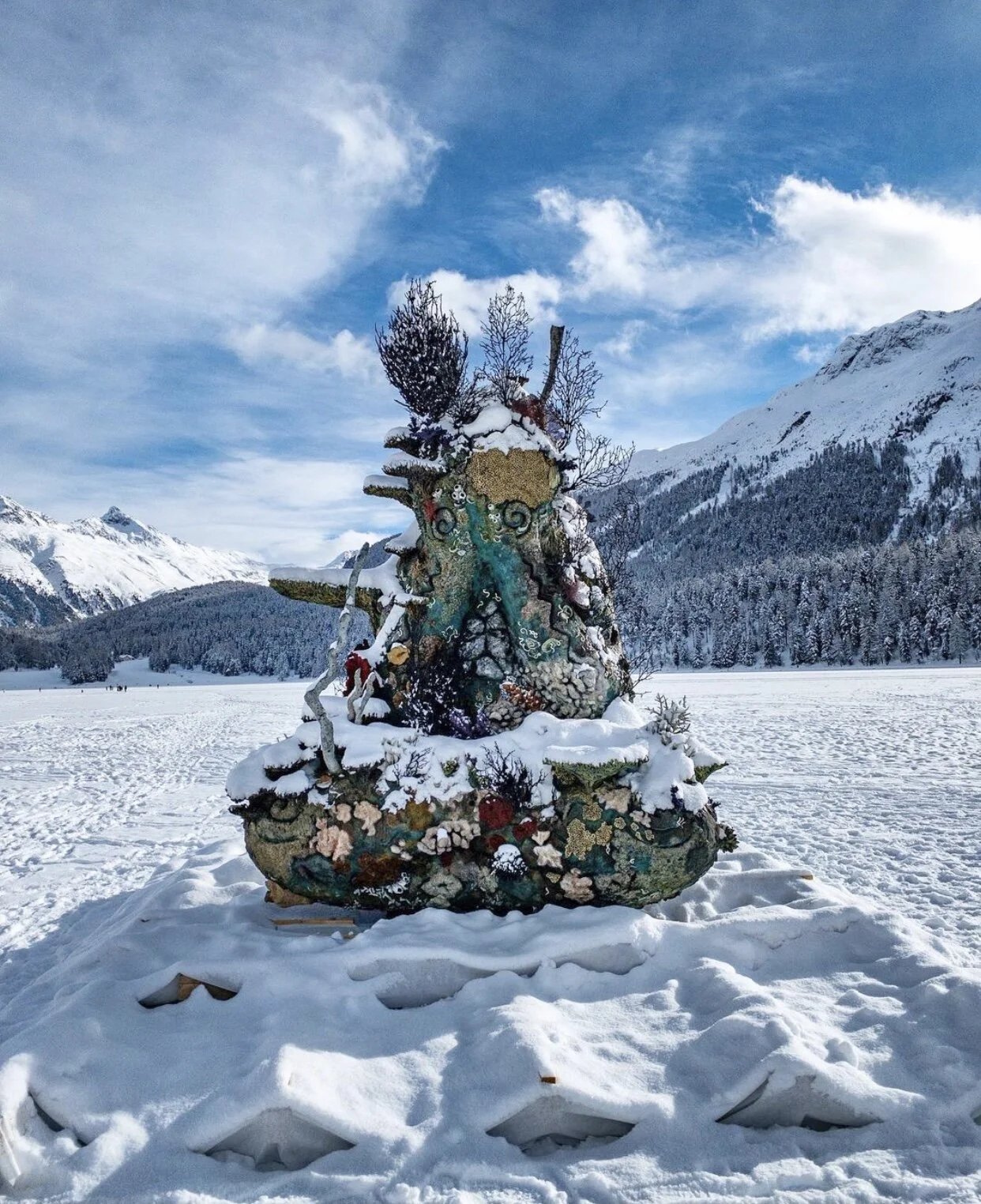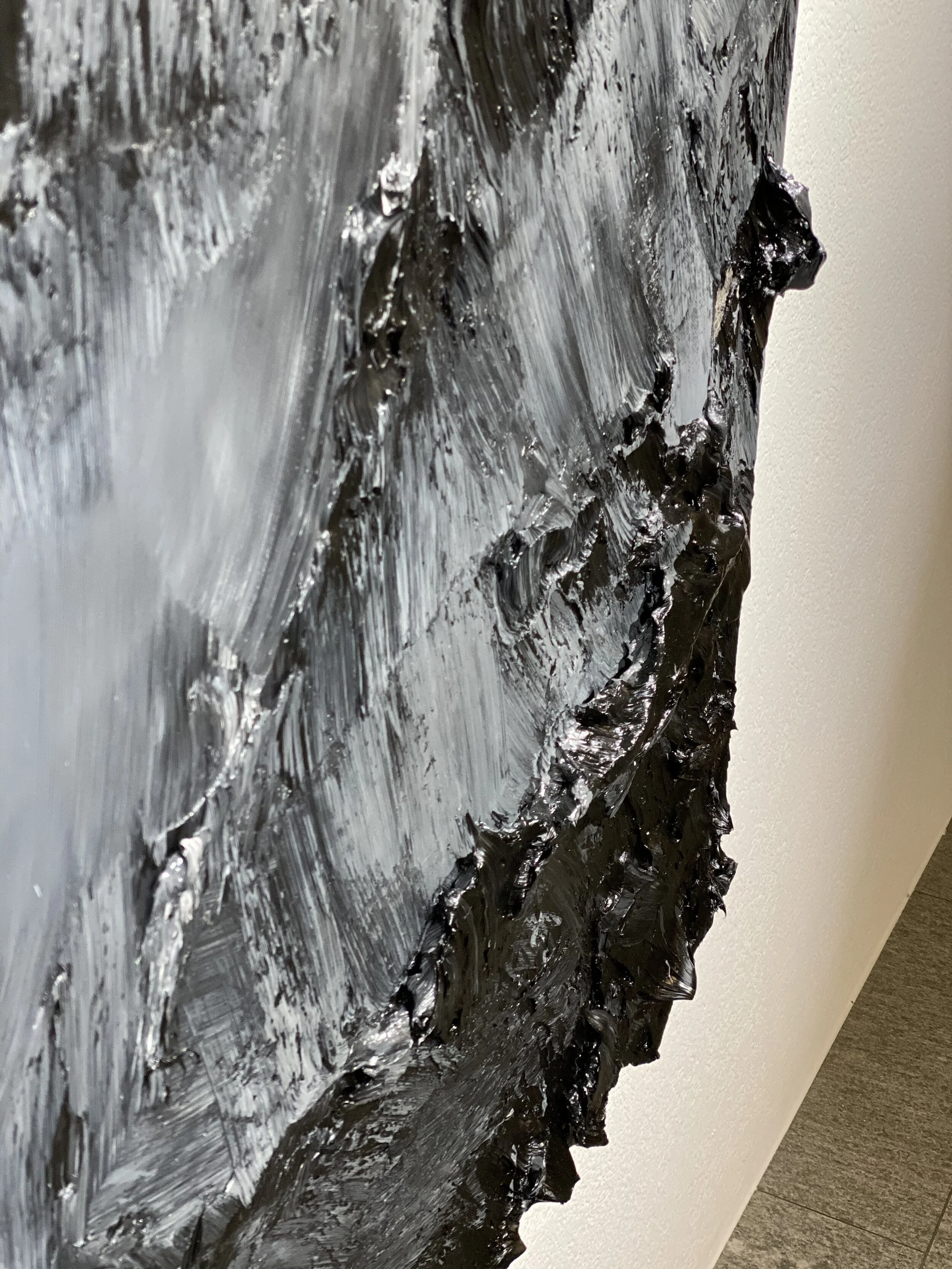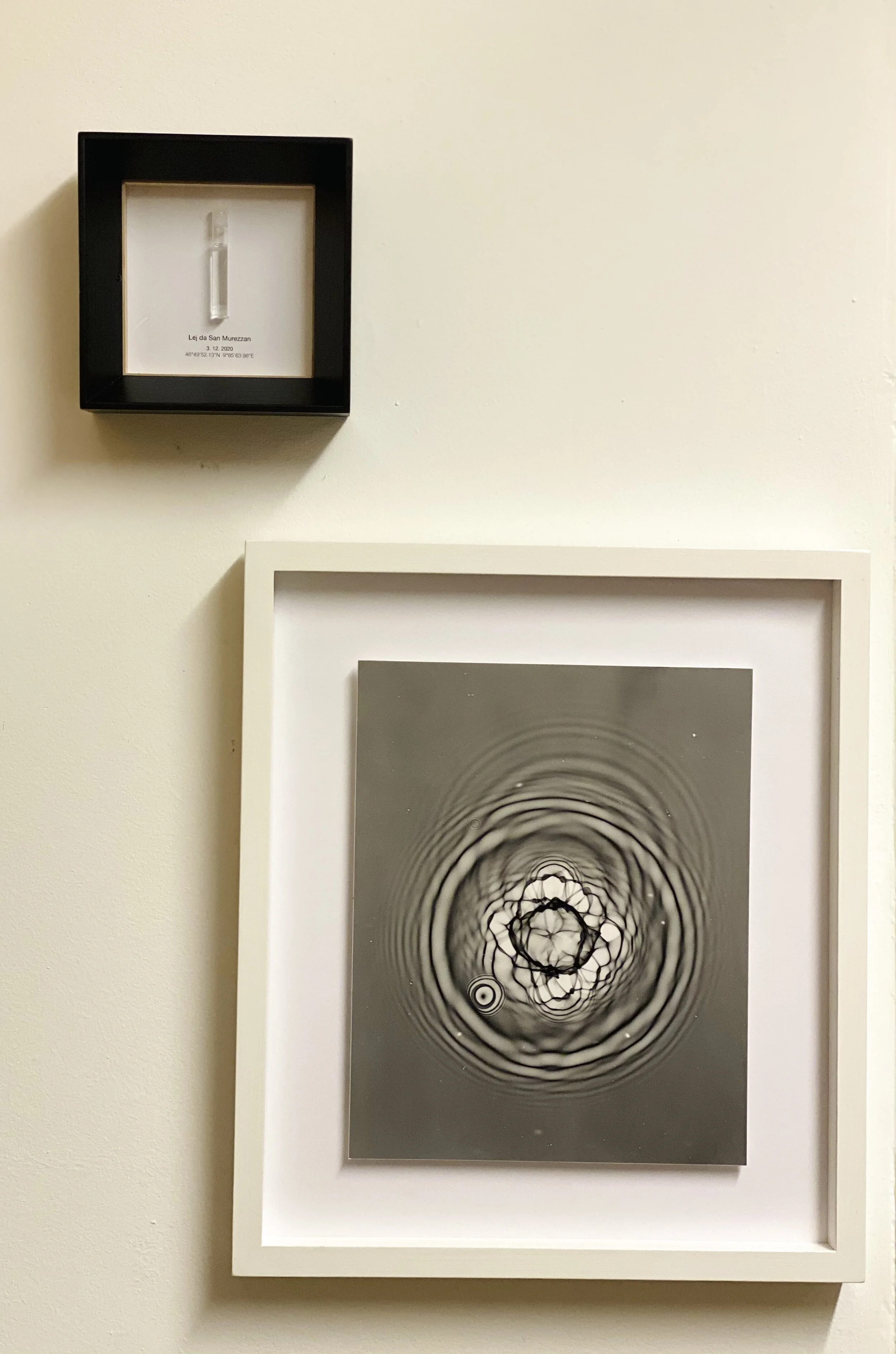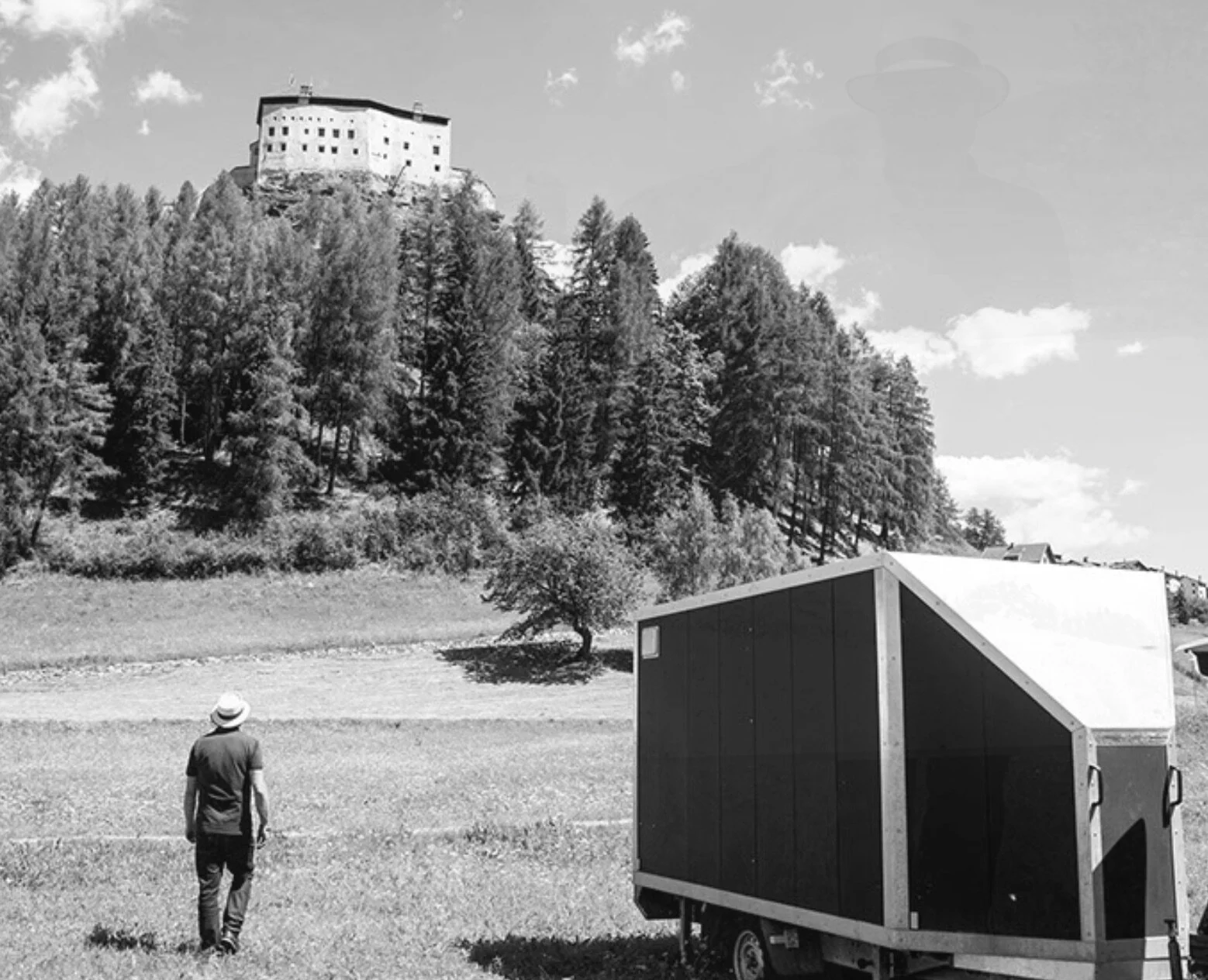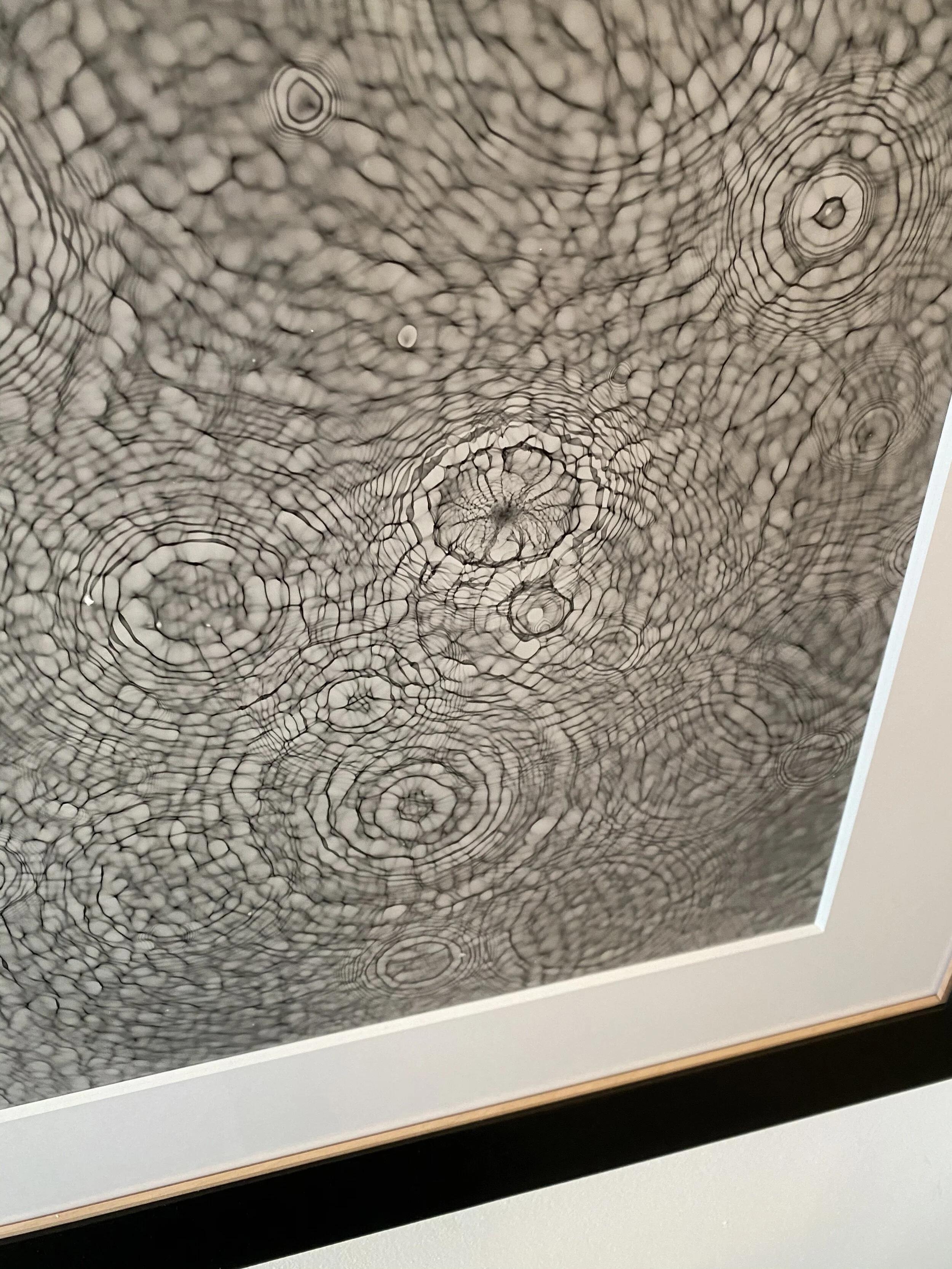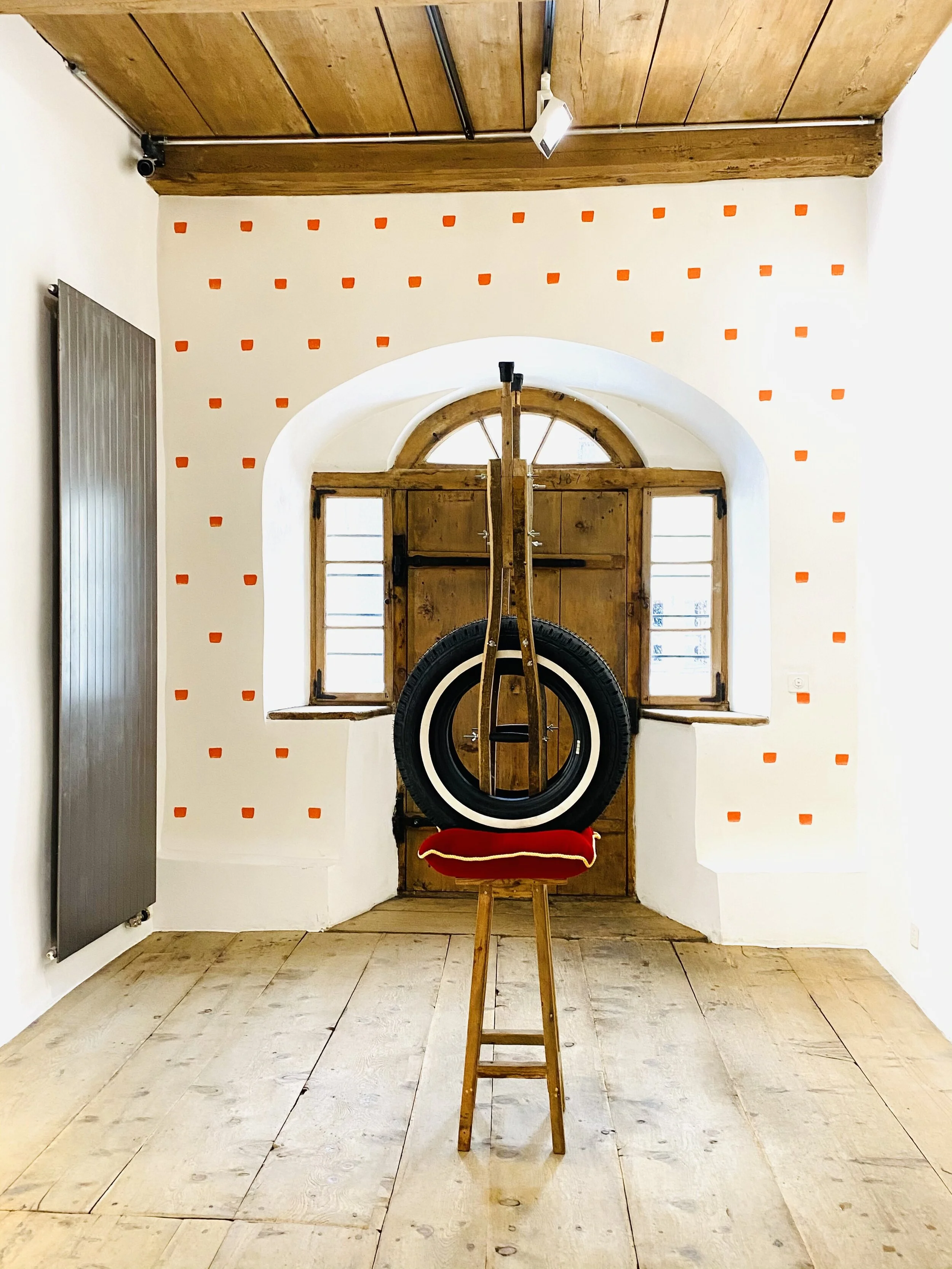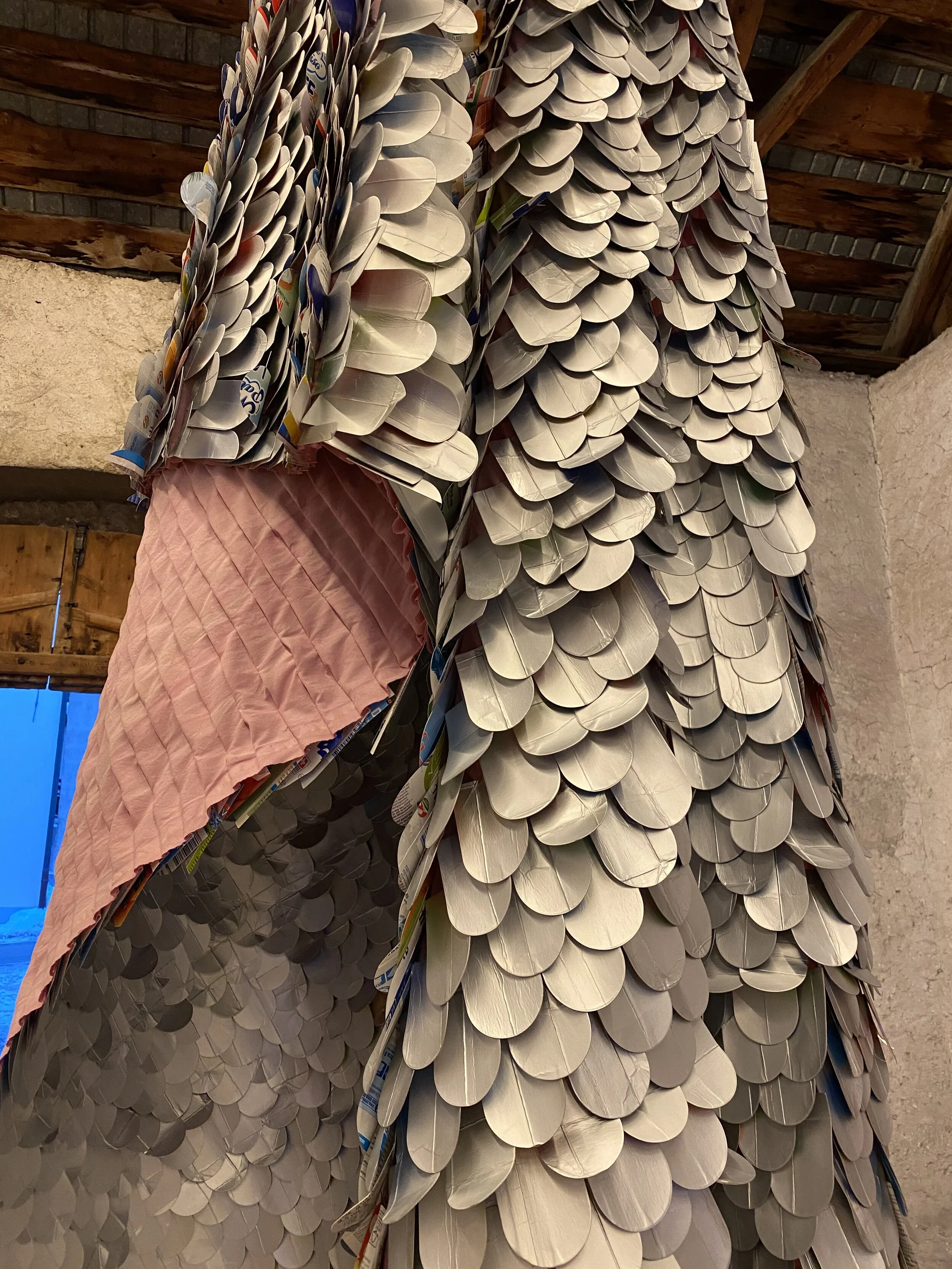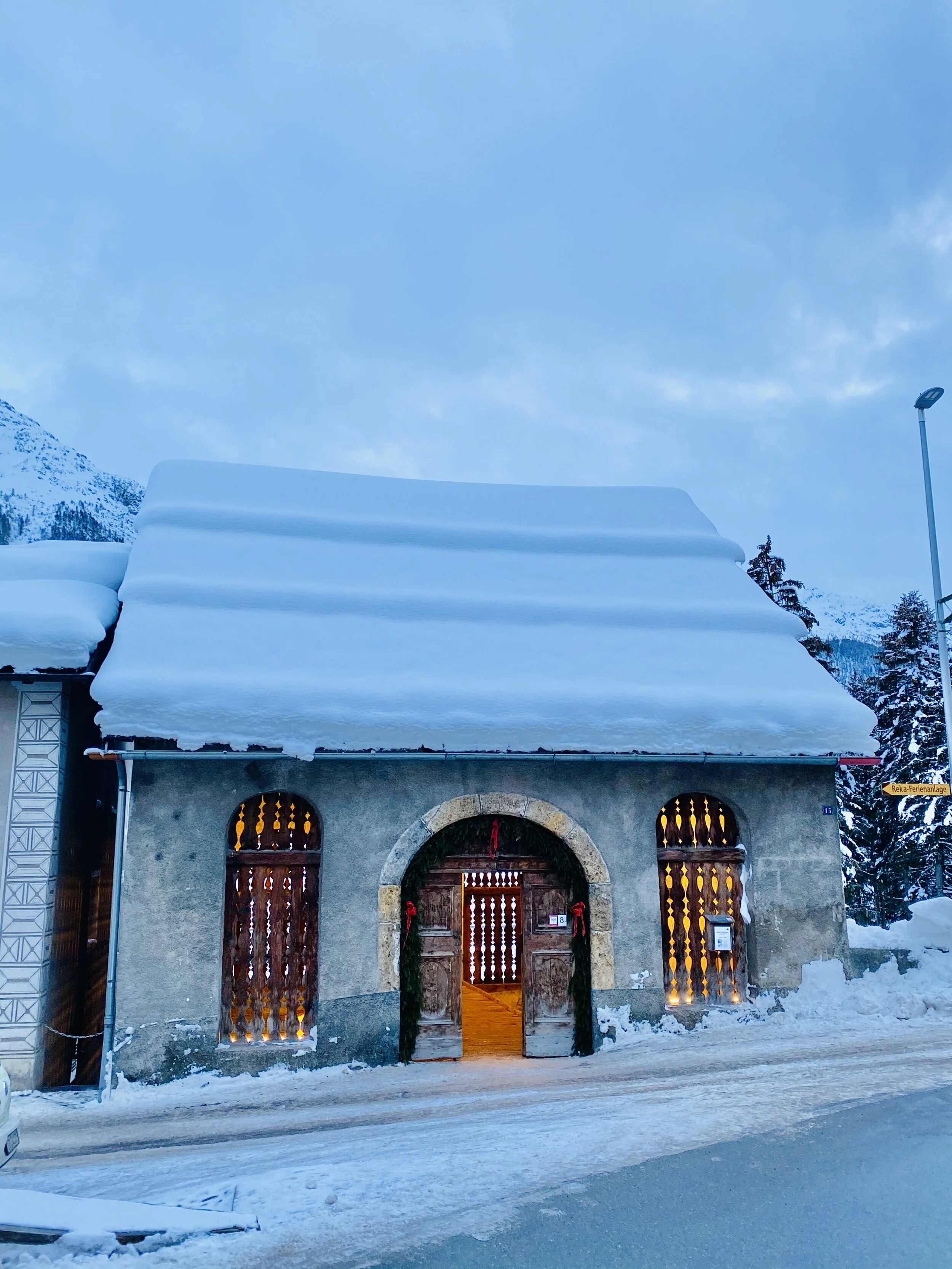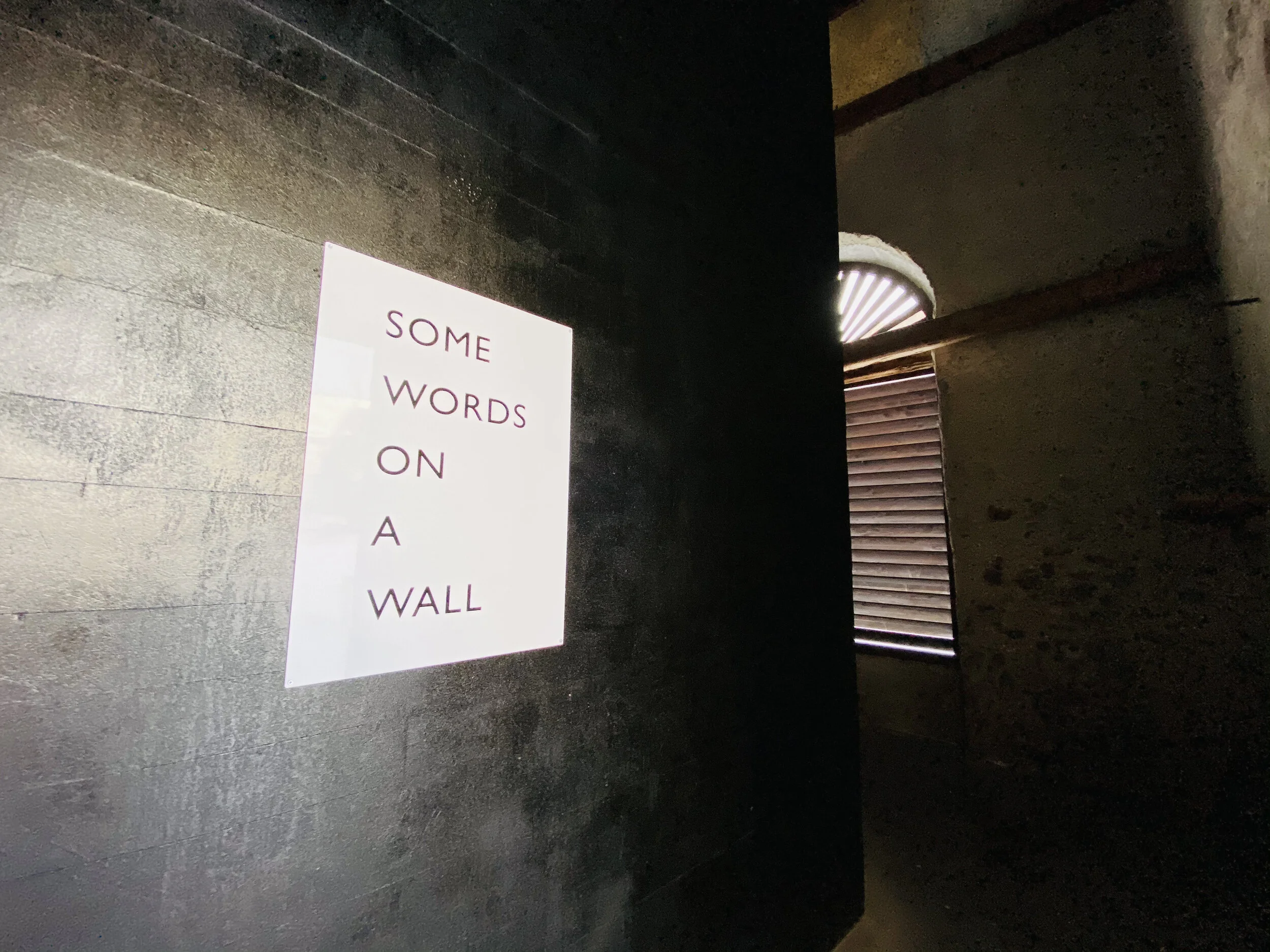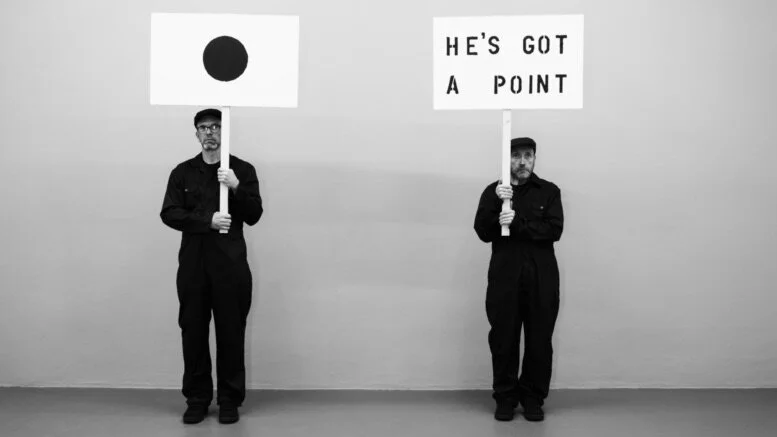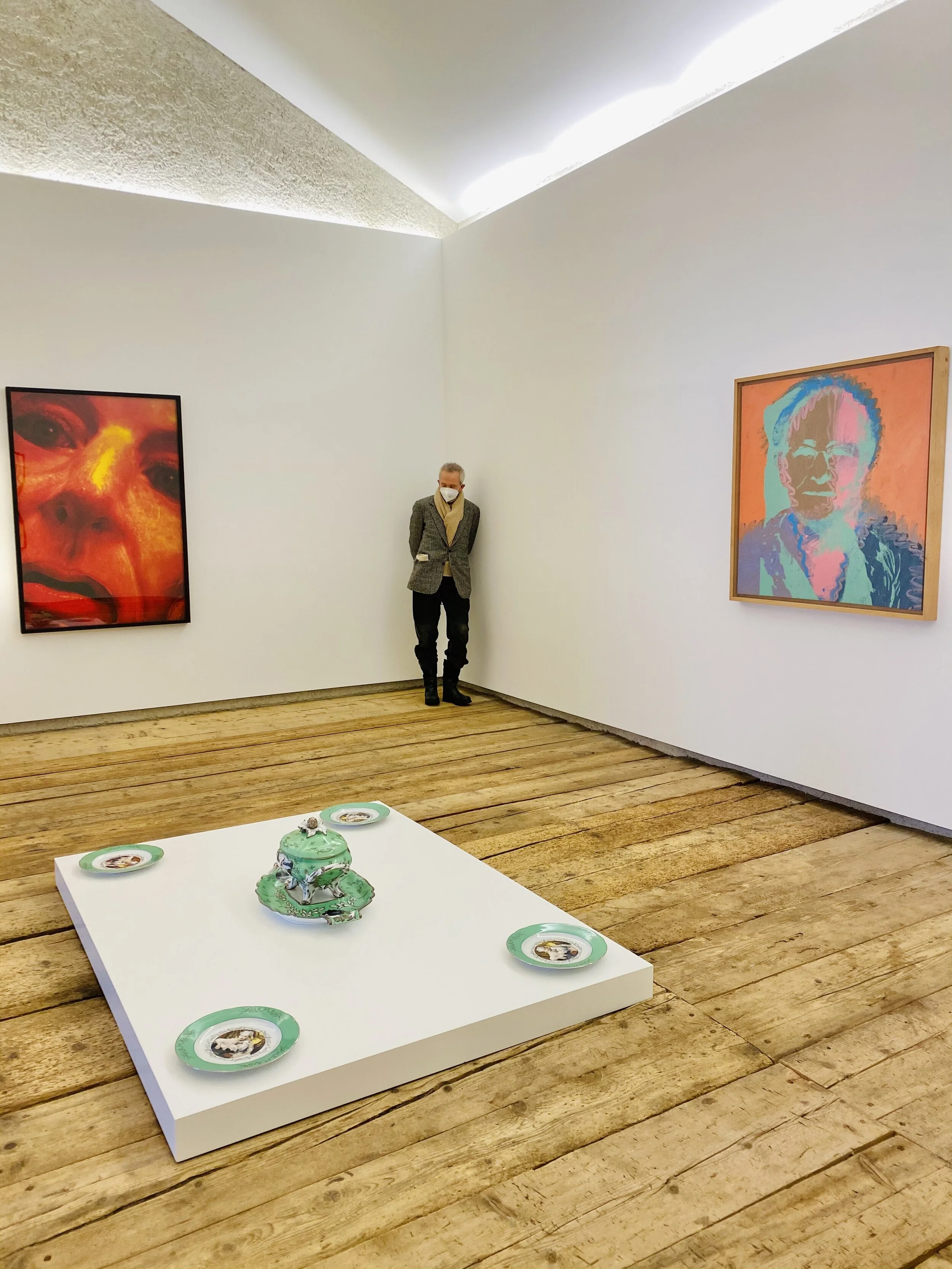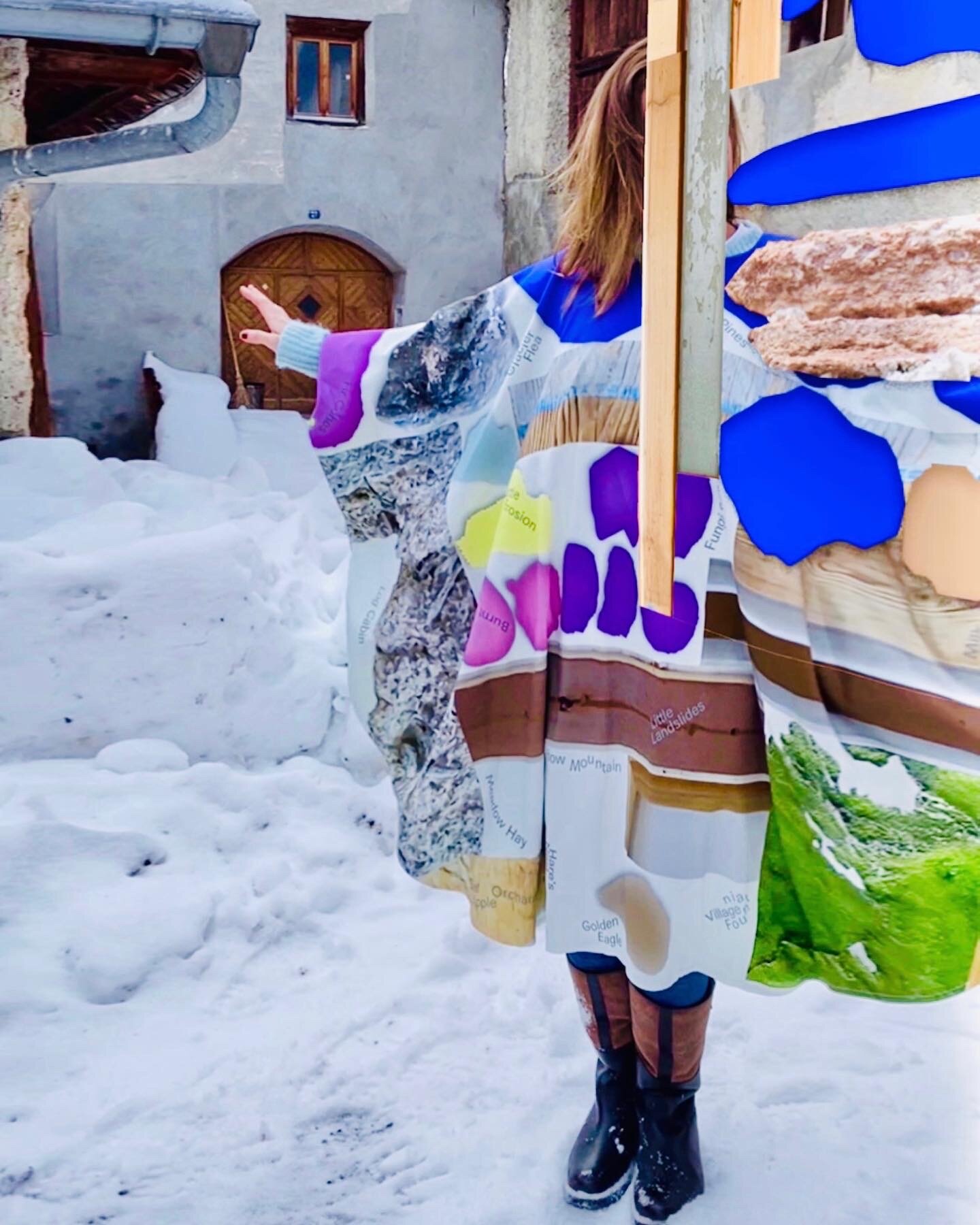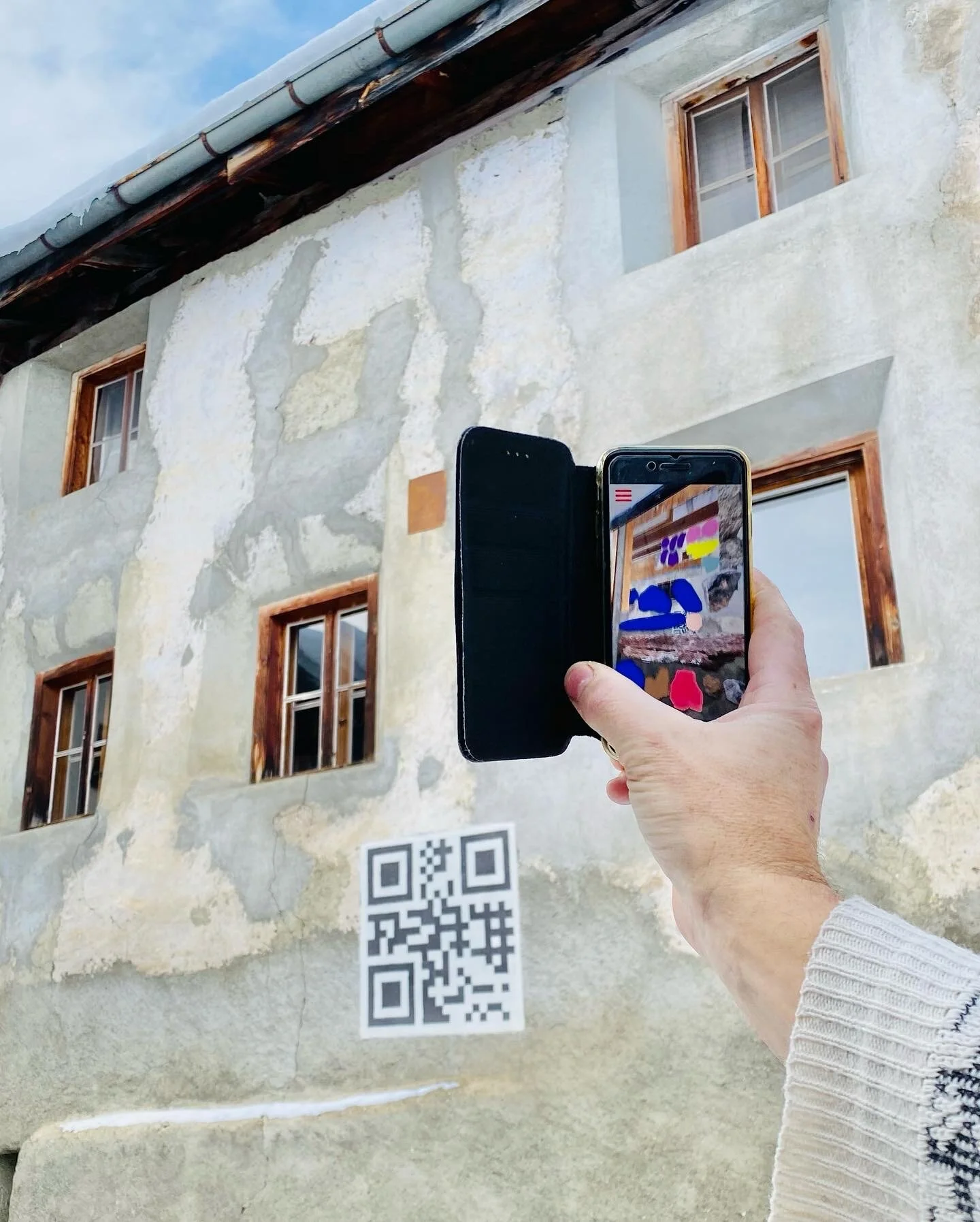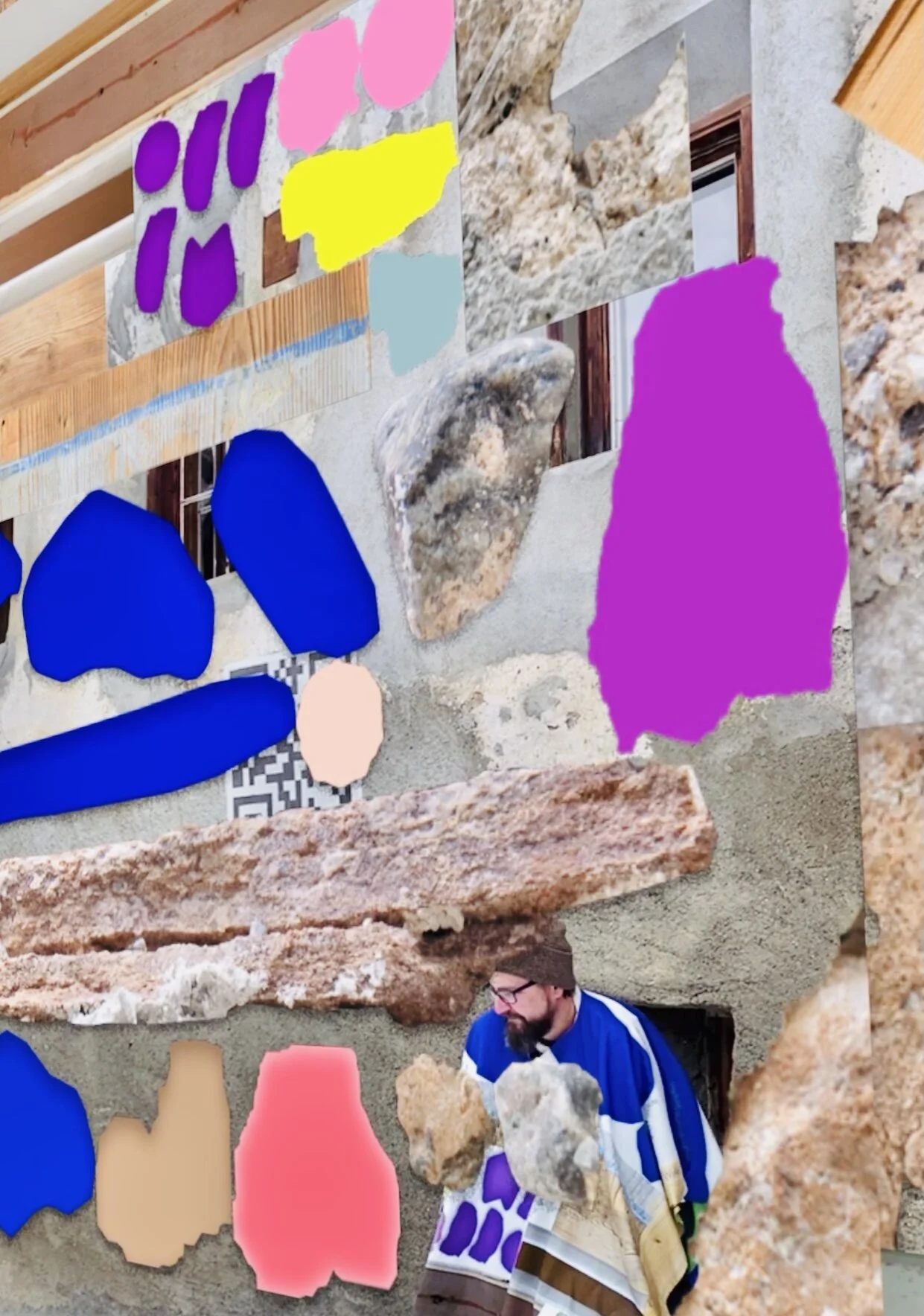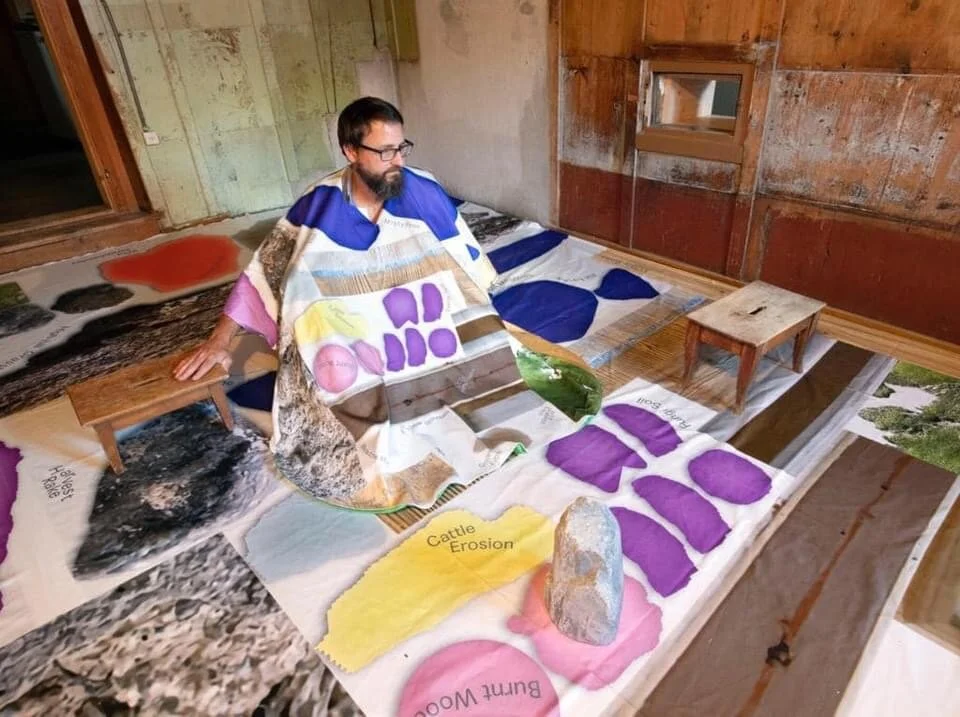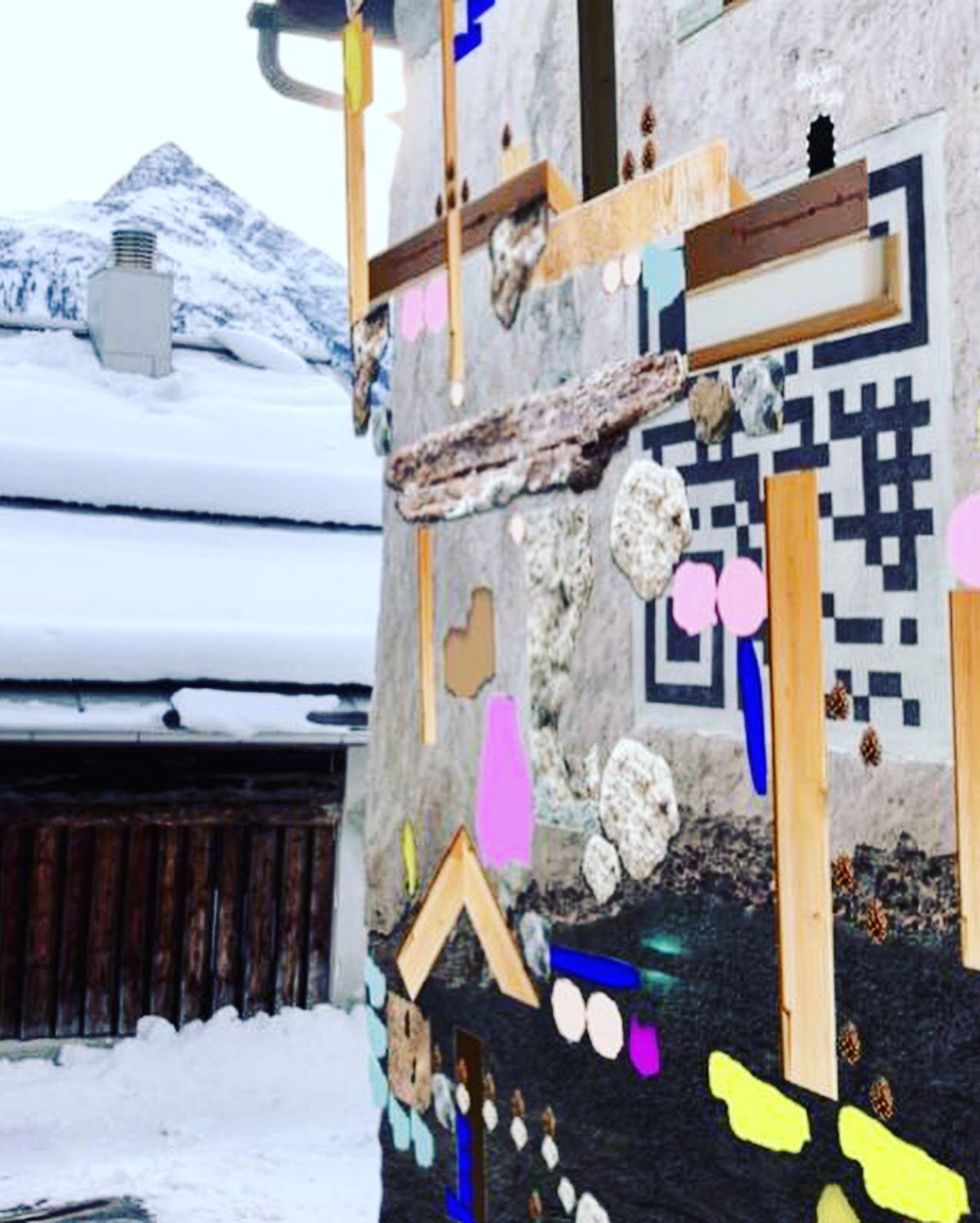KAMIAR’S MONTHLY REPORT
JANUARY 2021 | ST. MORITZ & THE ENGADINE EDITION
The Post-COVID Art World: Shouldn’t the “Slow Art” Experience Outrun the “Art Marathoners”?
This month, Kamiar’s Monthly Report makes an exciting excursion to the Swiss Alps where we find a good friend of VOLTA, Carolin A. Geist. Carolin is on the board of the Culture Commission of St. Moritz, she curates private collections and her latest collaborative project, ArtDeal (@artdeal_), is a next generation art and technology platform. She also founded and writes for St. Moritz Art News (@stmoritz.art.news). Read on to experience all that St. Moritz has to offer!
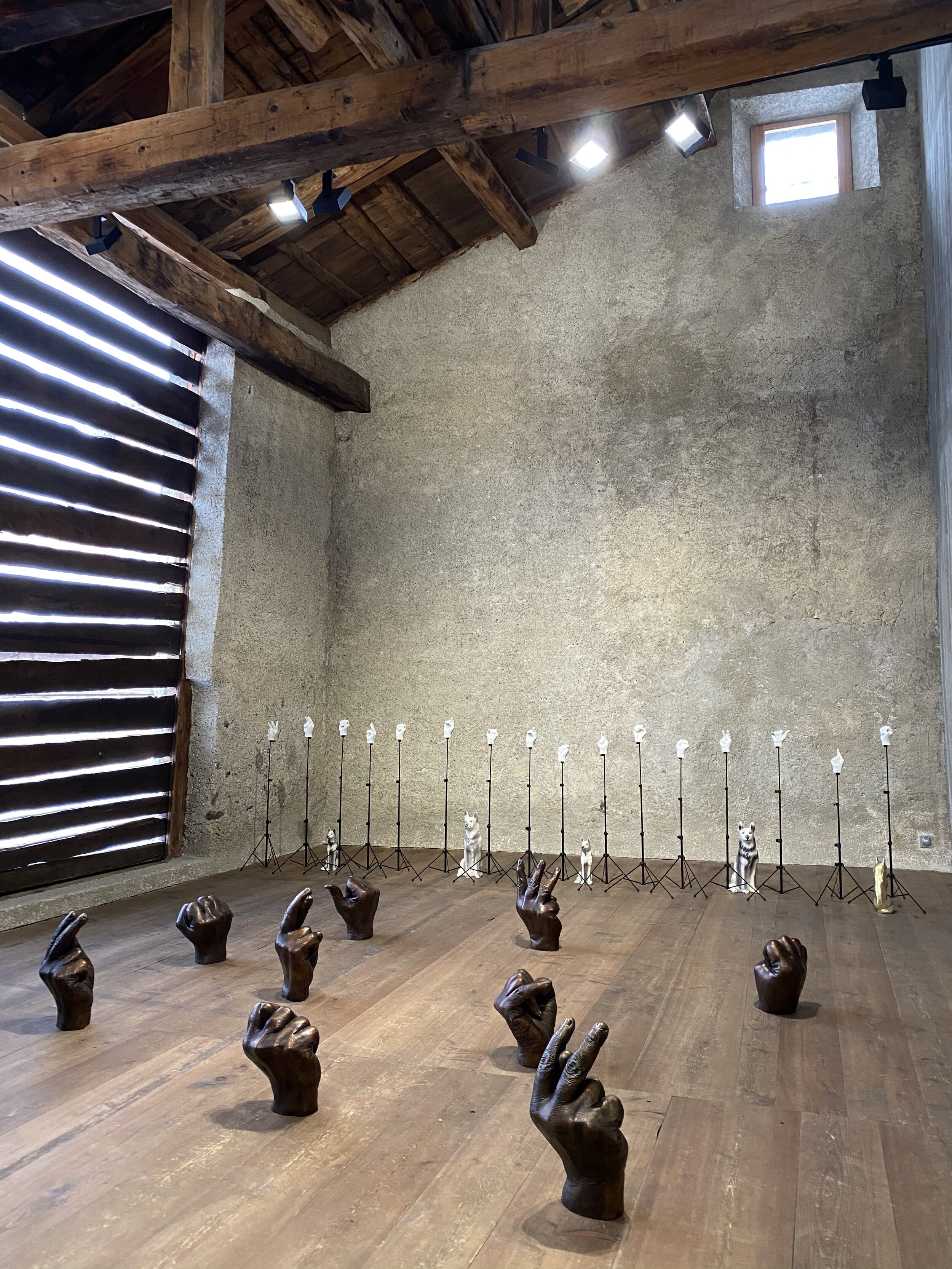
Galerie Tschudi, Zuoz (the typical Engadine Anti-White Cube Gallery): Kemang Wa lehulere, Where Did the Sky Go, 2020, 16 Bronze life size hands on 16 music stands- 16 bronze large hands - bronze dog head.
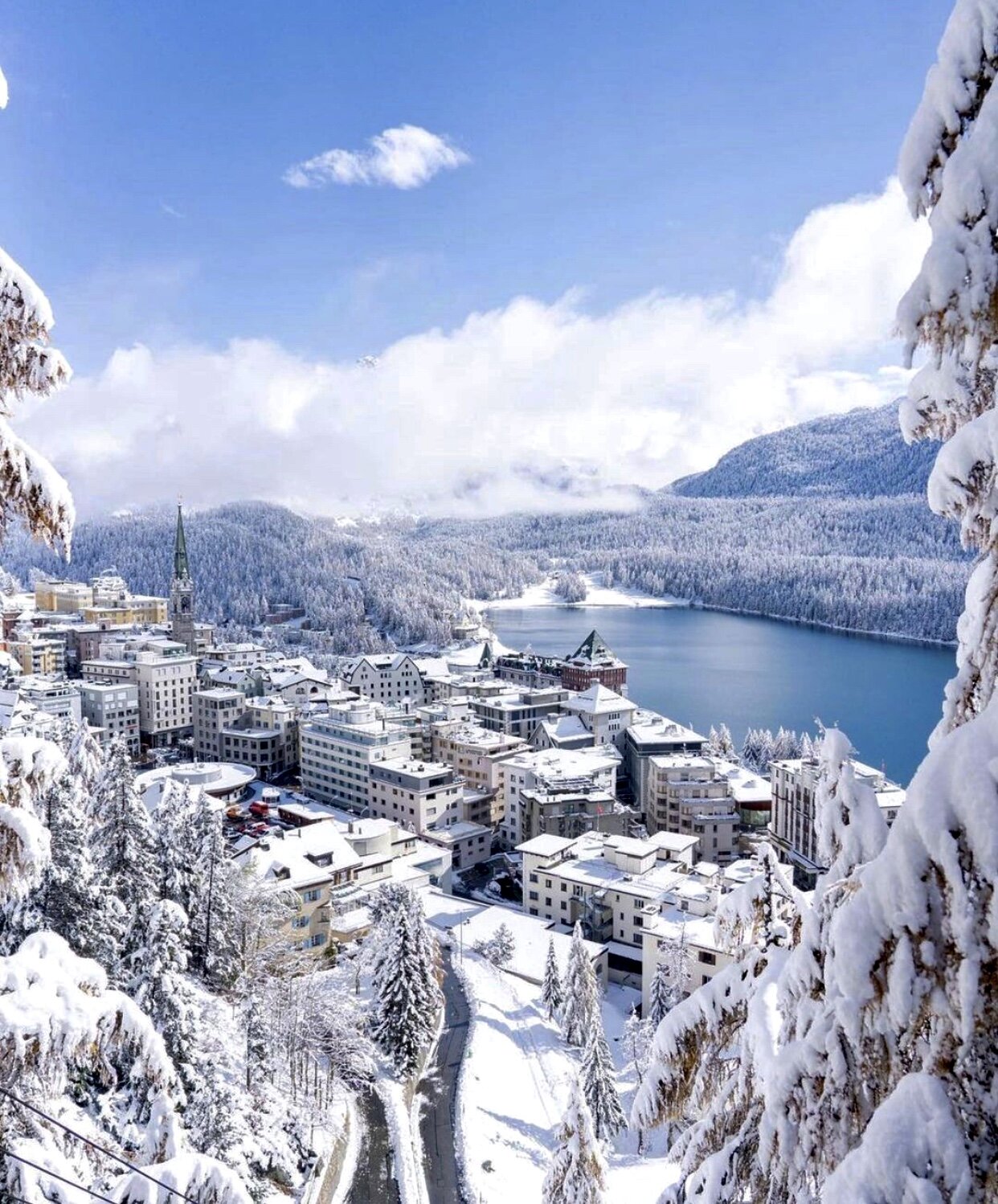
St.Moritz a little fairy tale city of less than 5000 inhabitants. Isn’t the view already an artwork ? You can’t buy it – you have to come!
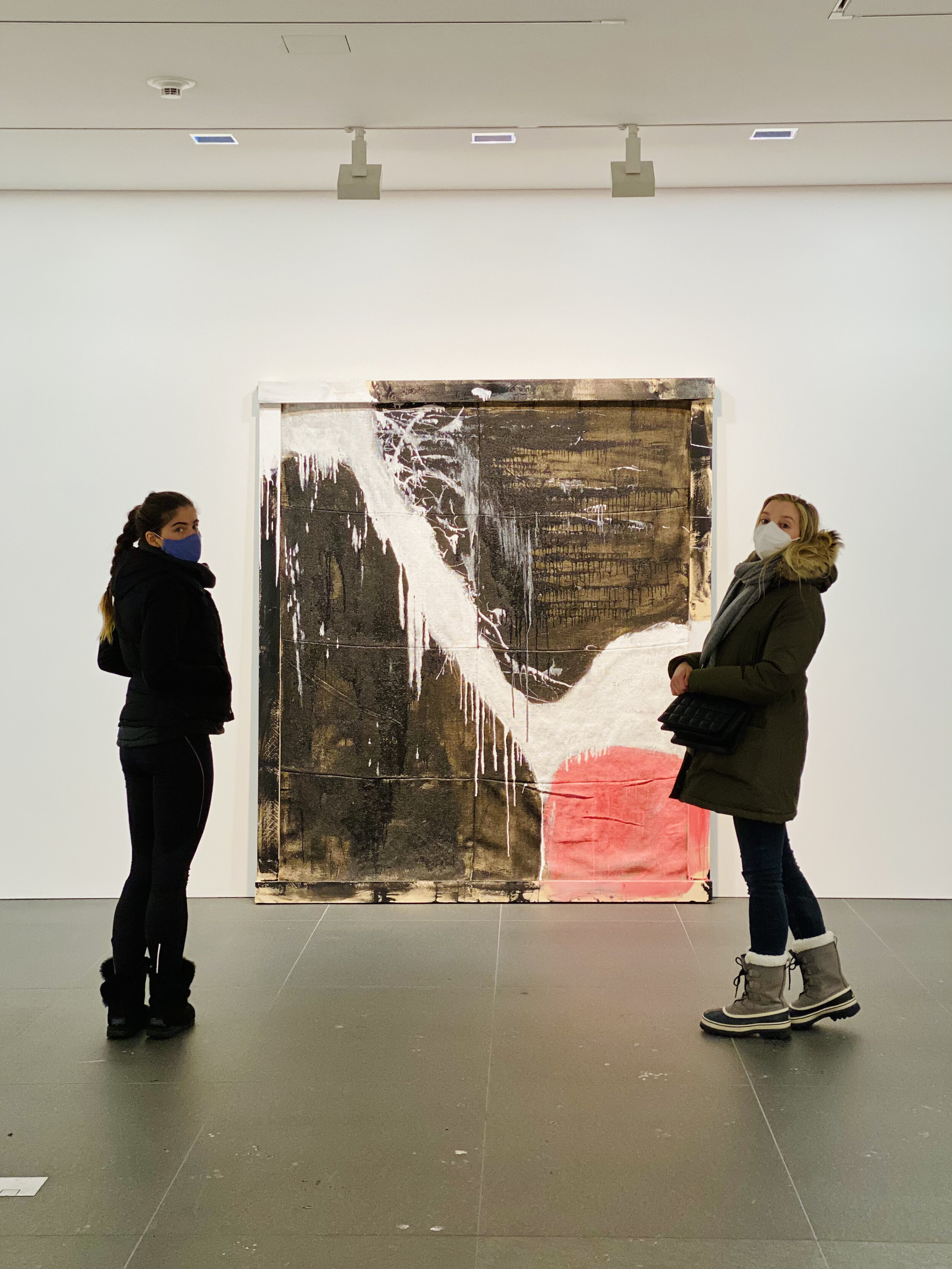
Galerie Andrea Caratsch: Charlotte Leimer, Discharge, 2020, Oil on Burlap with Wood Construction.
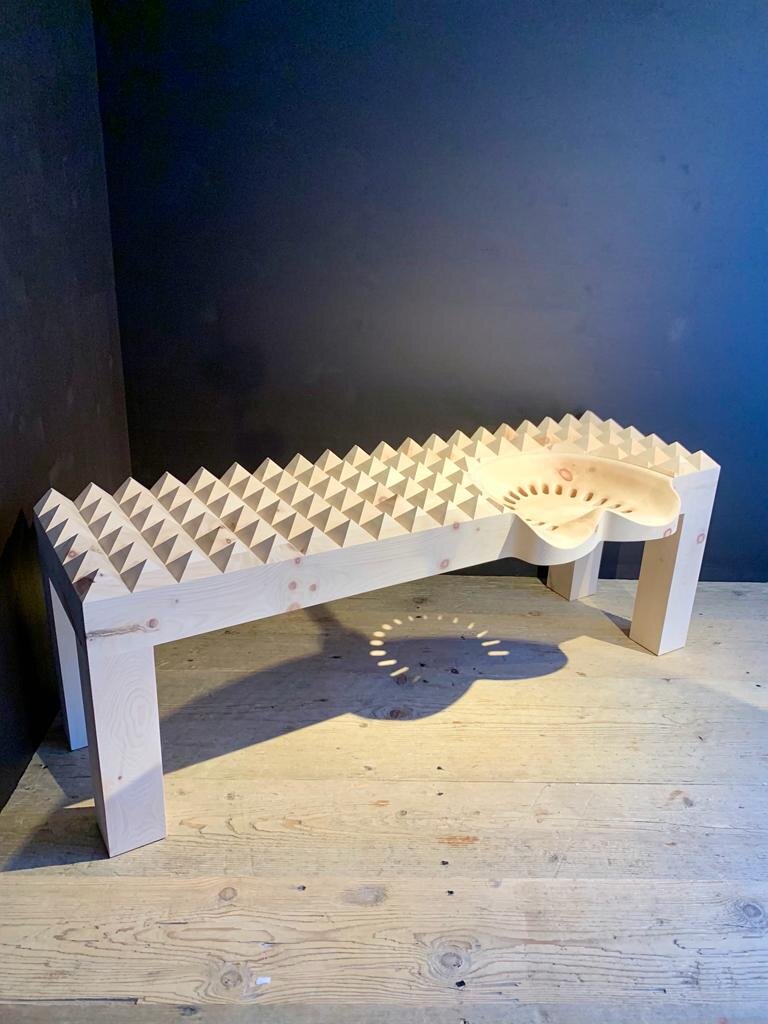
The "Corona Museum Bench with traktor seat" - one of the most beautiful things I have seen lately. By DALINI, drawn by Dan-Felix Paraschiv.
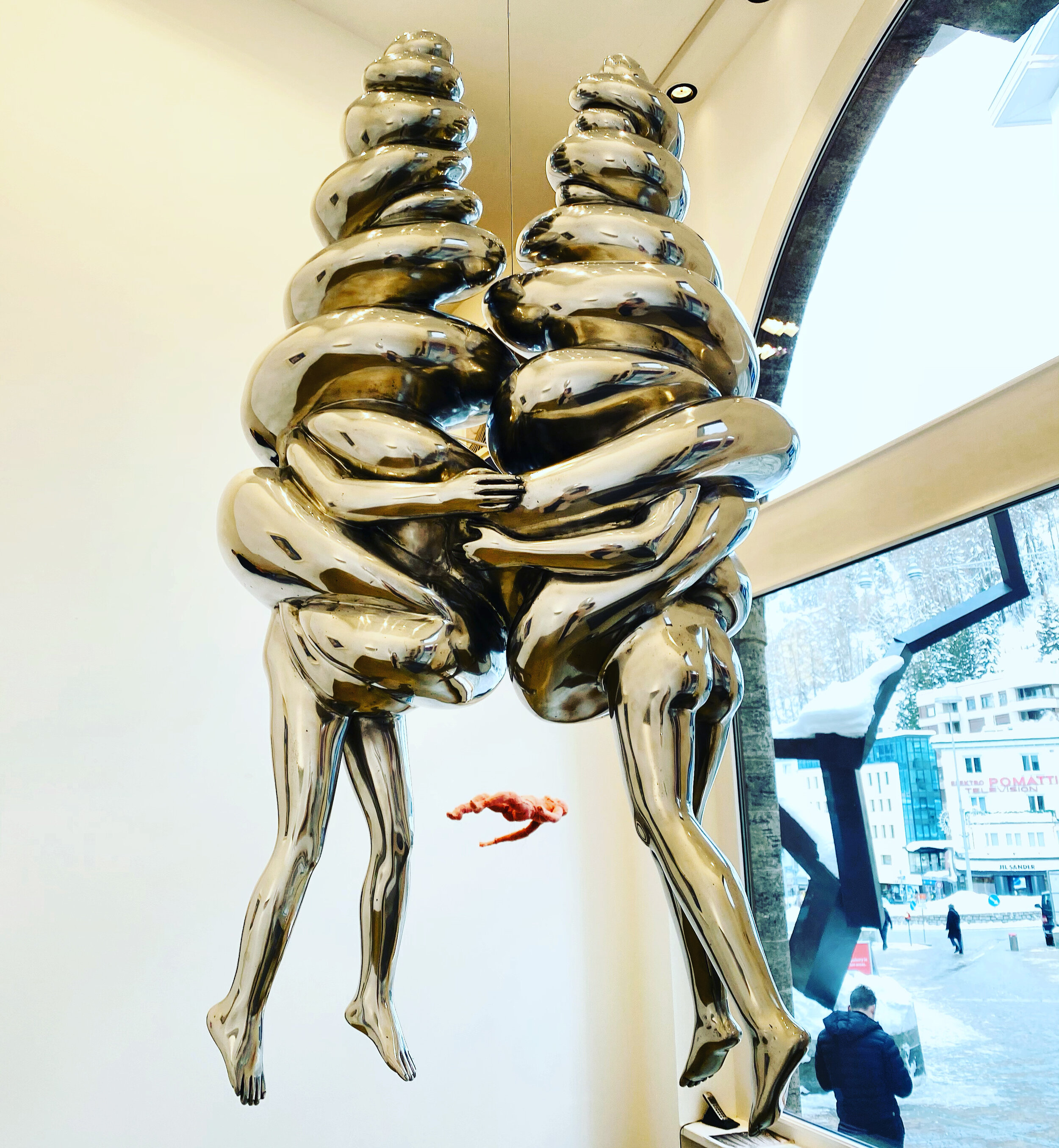
Galerie Karsten Greve: Louise Bourgeois, 2003 Aluminum, hanging work.
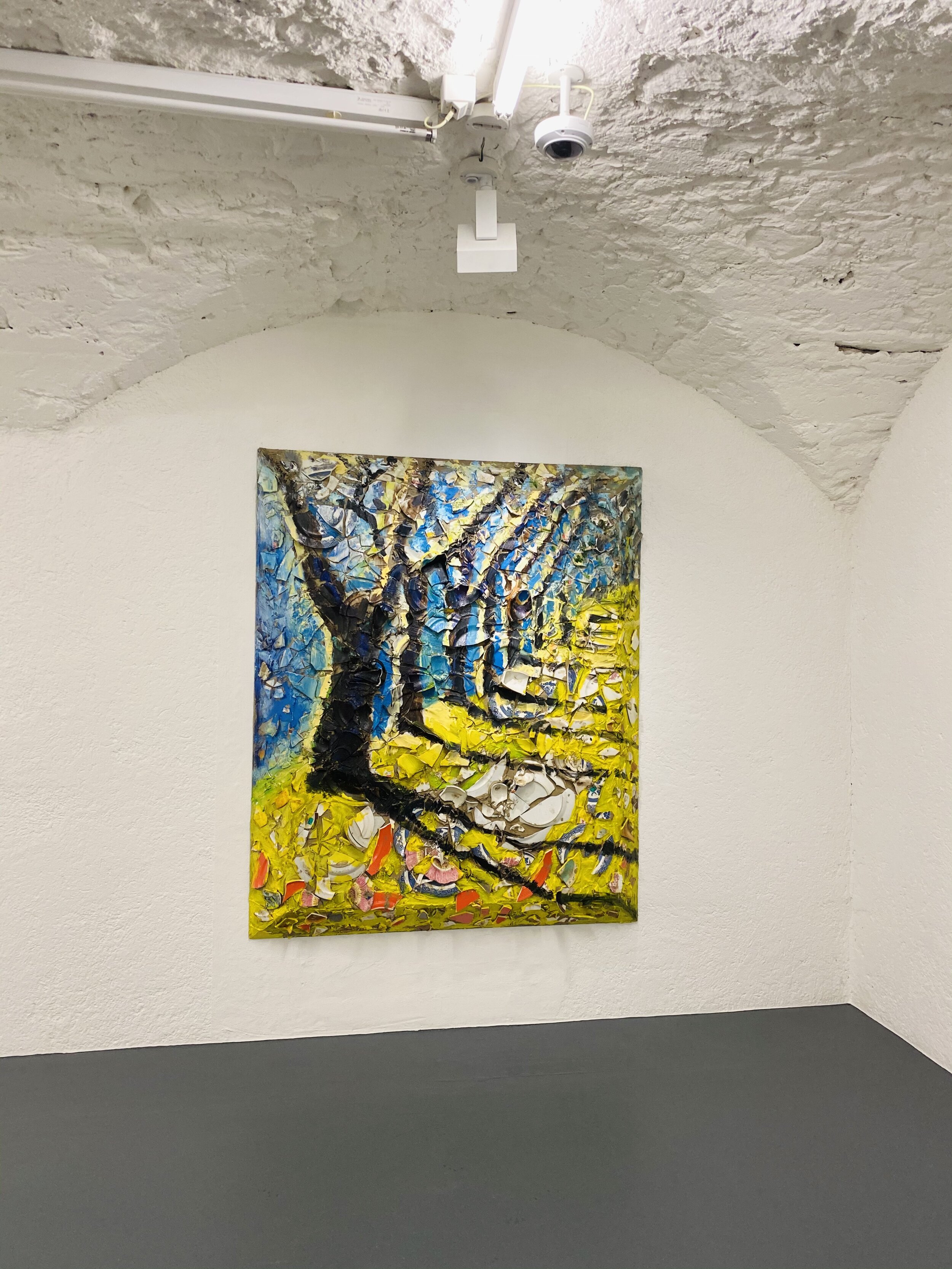
Vito Schnabel Gallery: Julian Schnabel, Trees of Home (For Peter Beard) 5, 2020, Oil, Plates, Bondo on Wood.
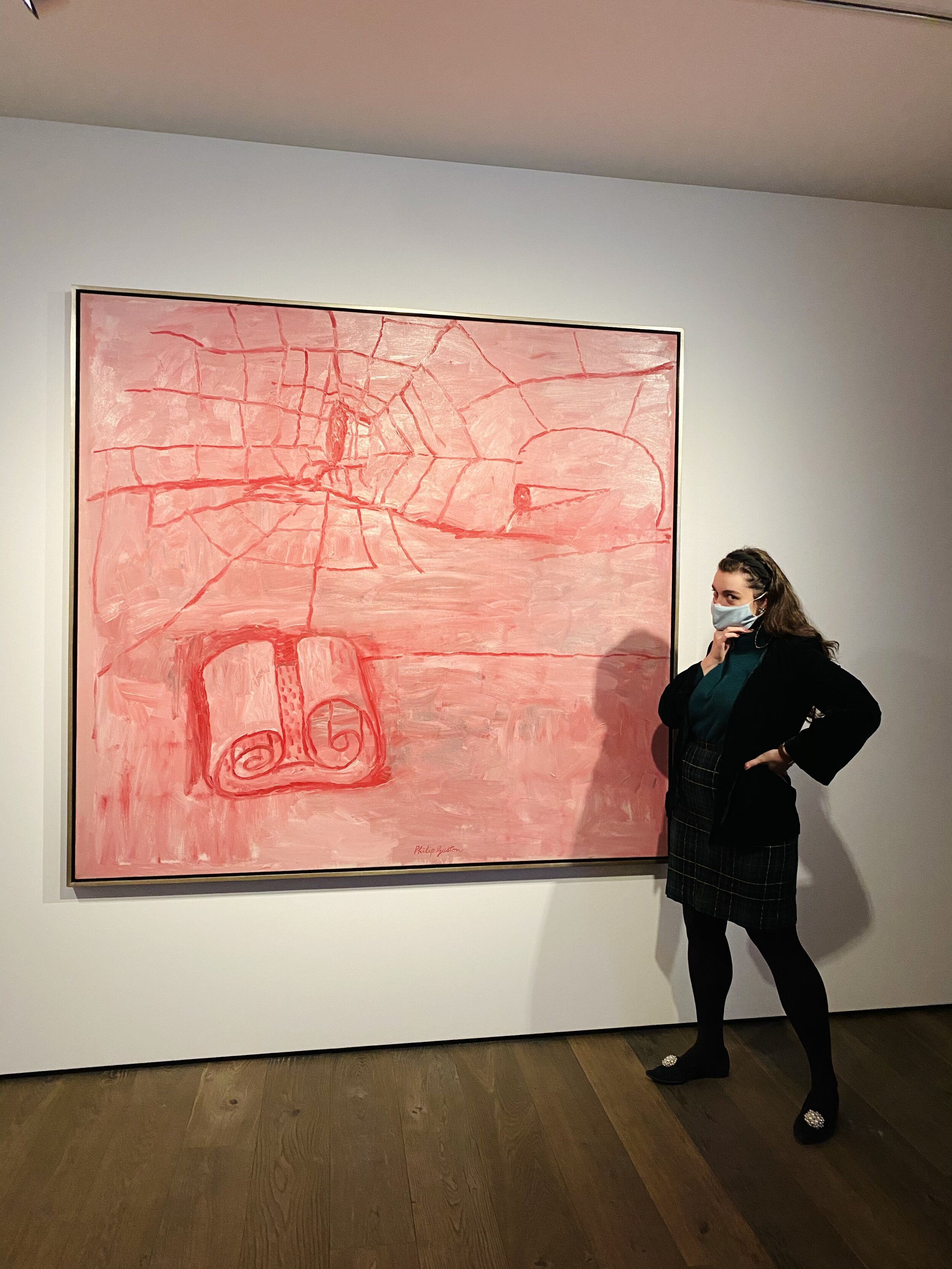
Hauser Wirth: Philip Guston, The Poet, 1975, Oil on Canvas.
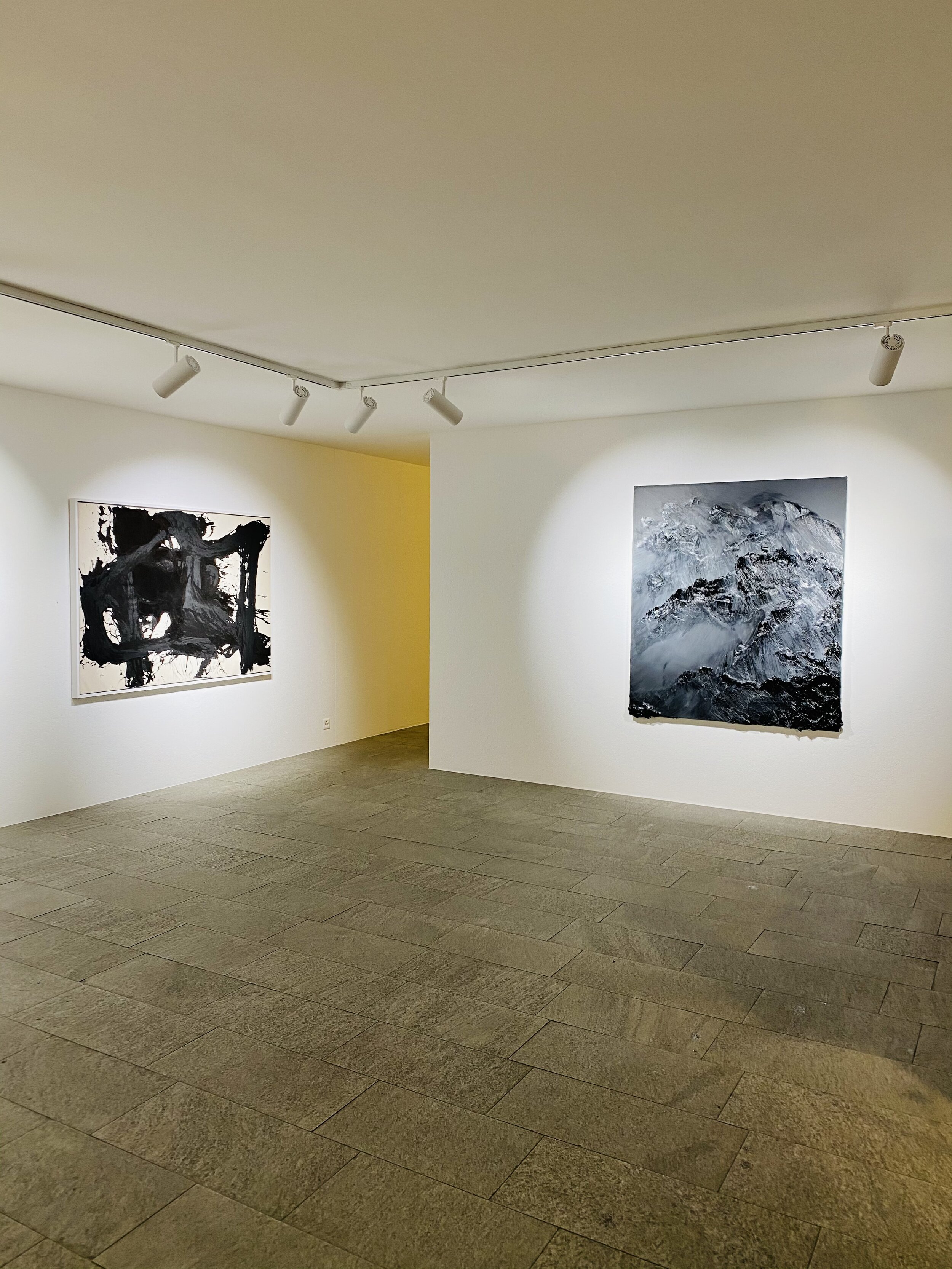
JD Malat Gallery Pop-Up X Galerie 10 St.Moritz – Pop-Up Gallery Cooperation.
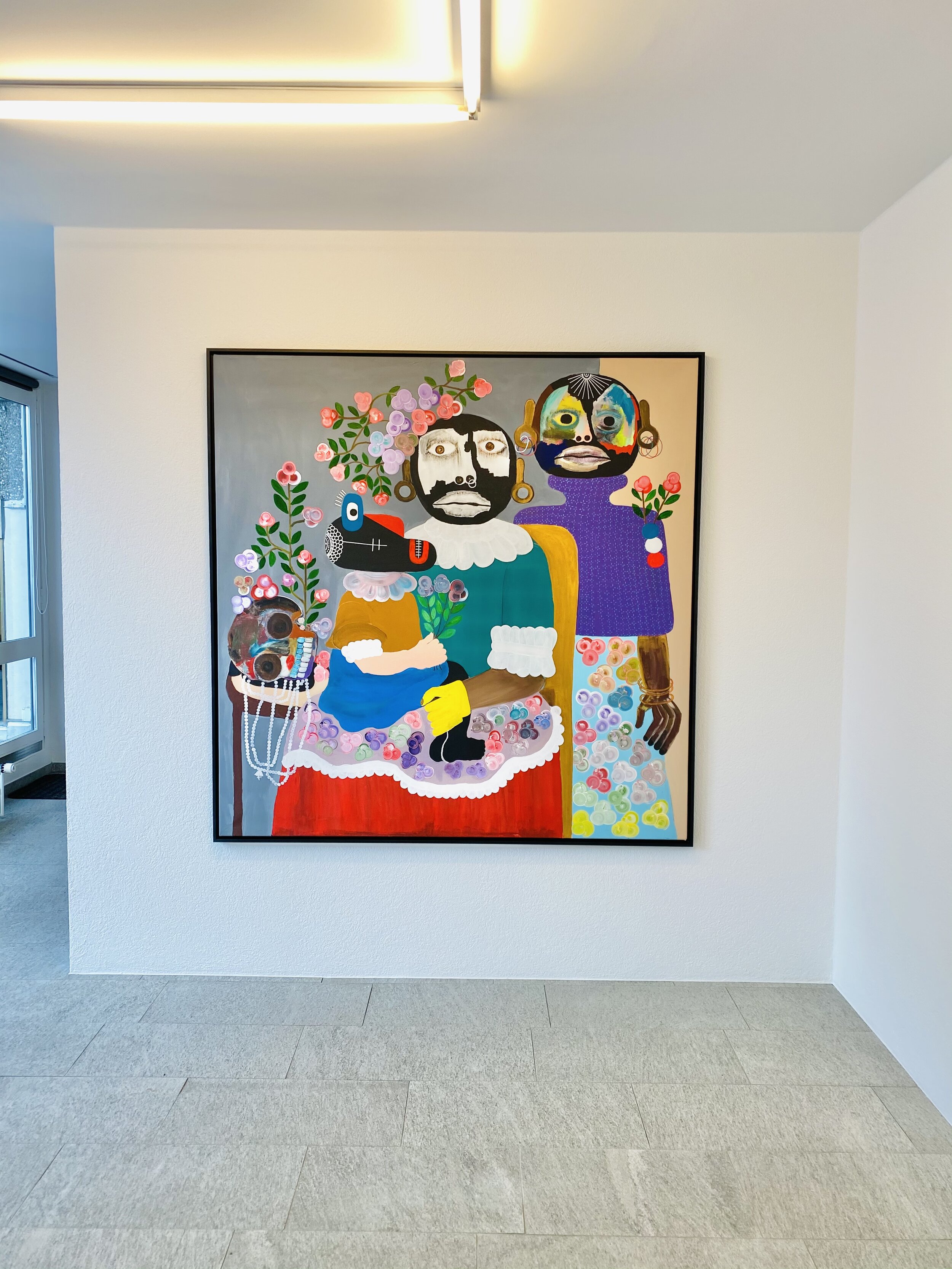
KOJO MARFO, Defend Honour, 2020 Acrylic on canvas.
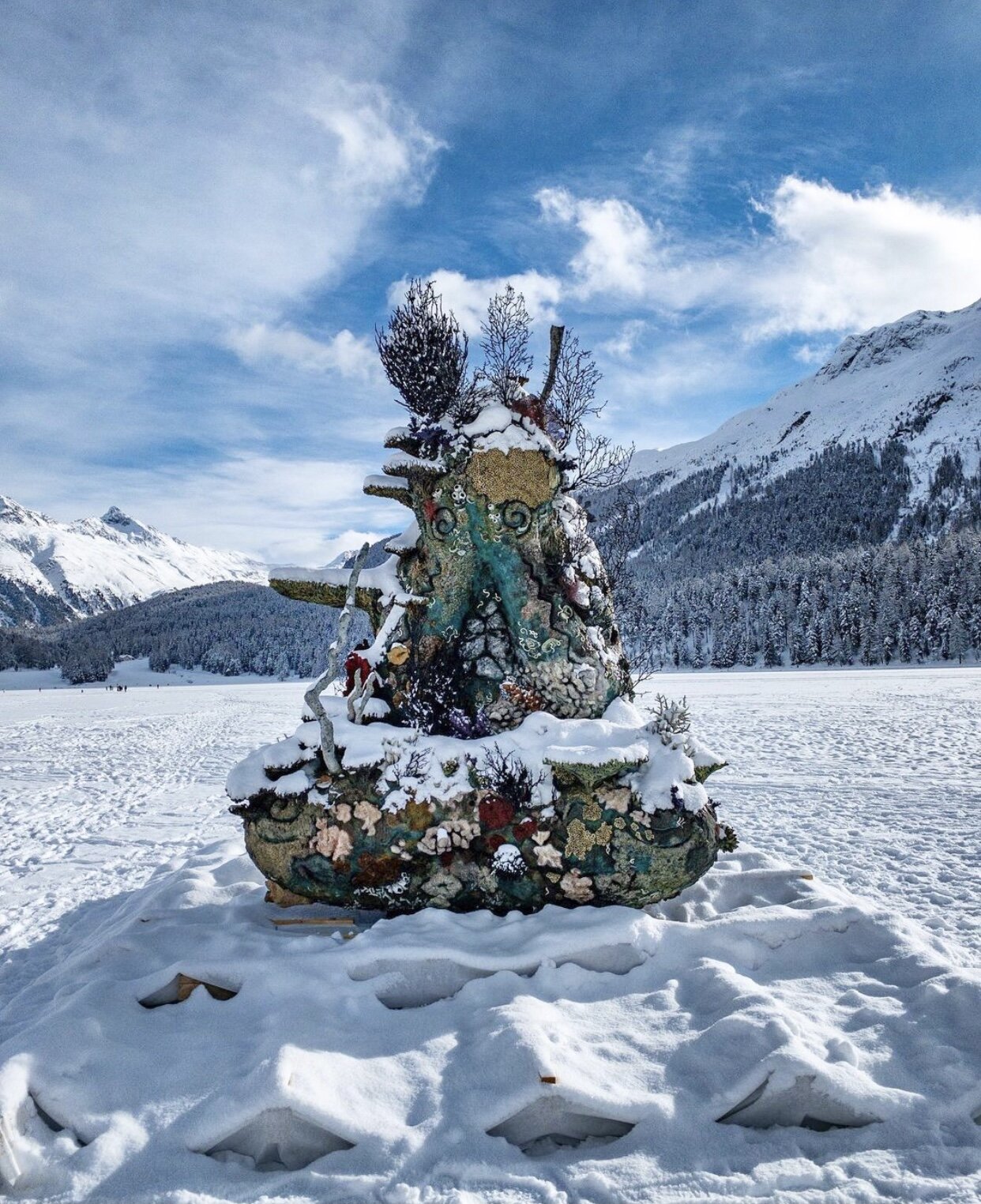
On the frozen Lake this Winter: Damien Hirst, The Monk, 2014 , a project by Marco Voena, Oscar Humphries, the Damien Hirst Studio.
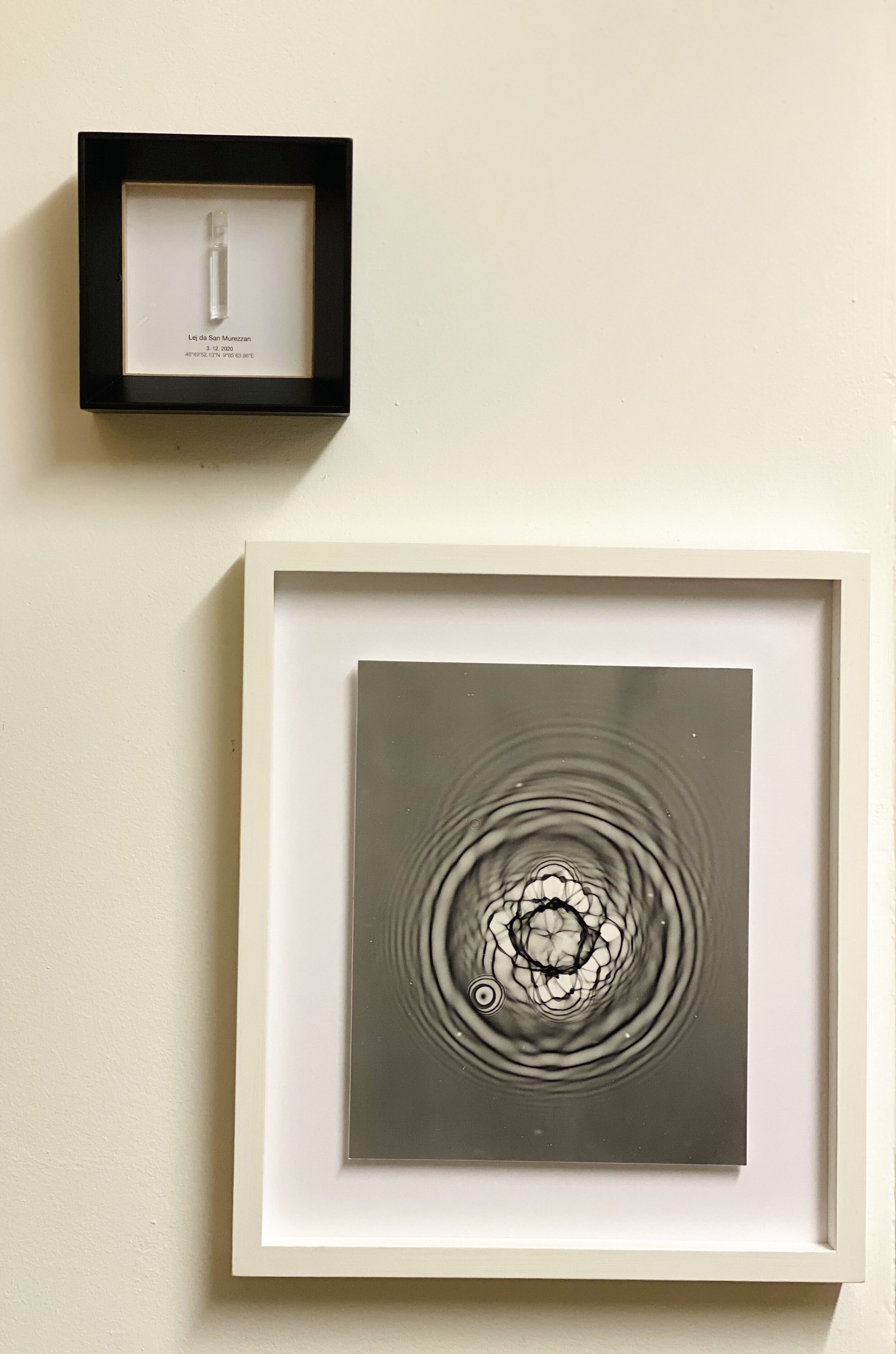
Daniel Meuli, Pictogram of Drops of Water from the St.Moritz Lake, 2020.
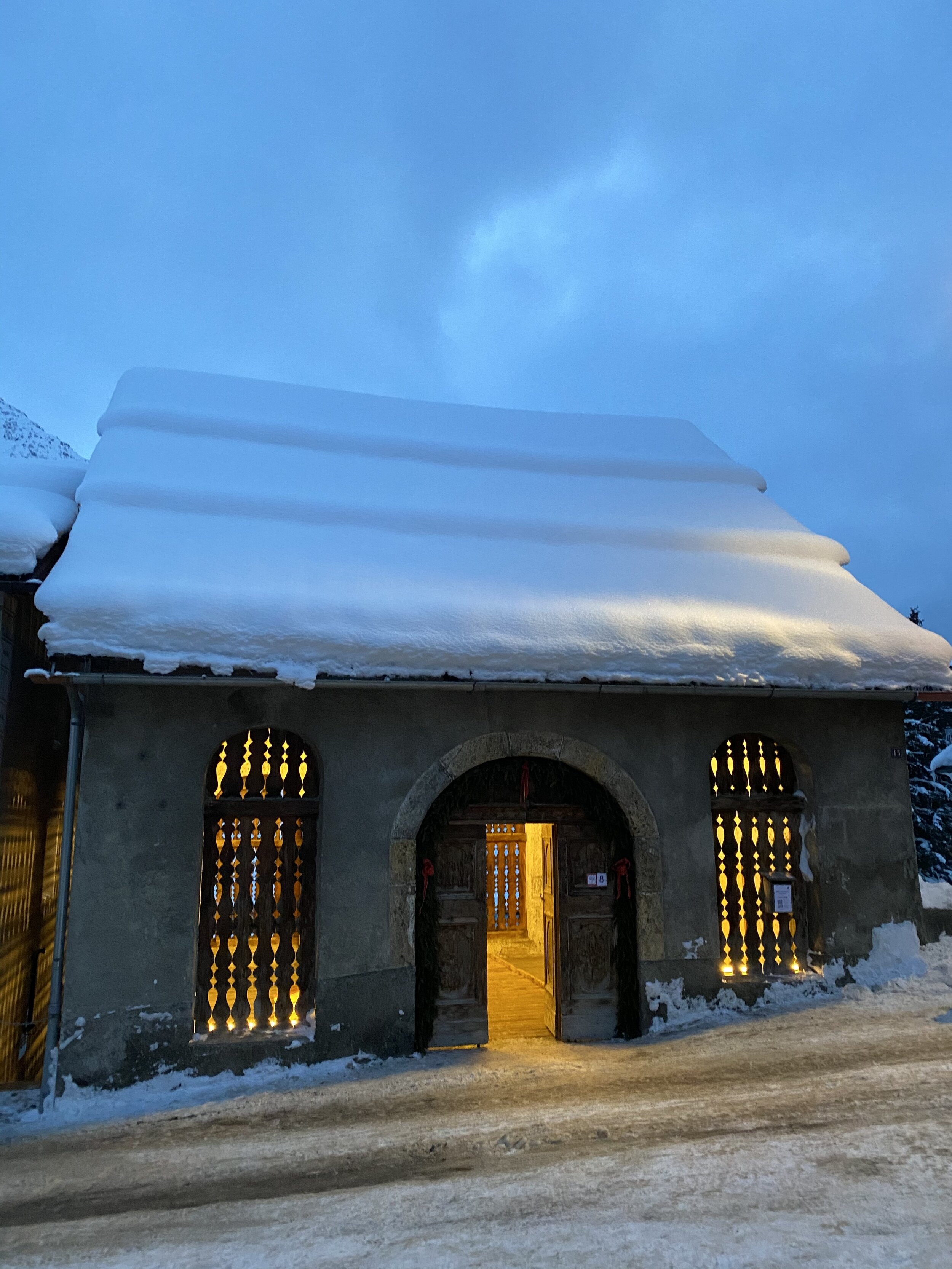
The "Engadin Style" Art World : International Contemporary Emerging Art in a 500 year old barn, the Stalla Madulain.
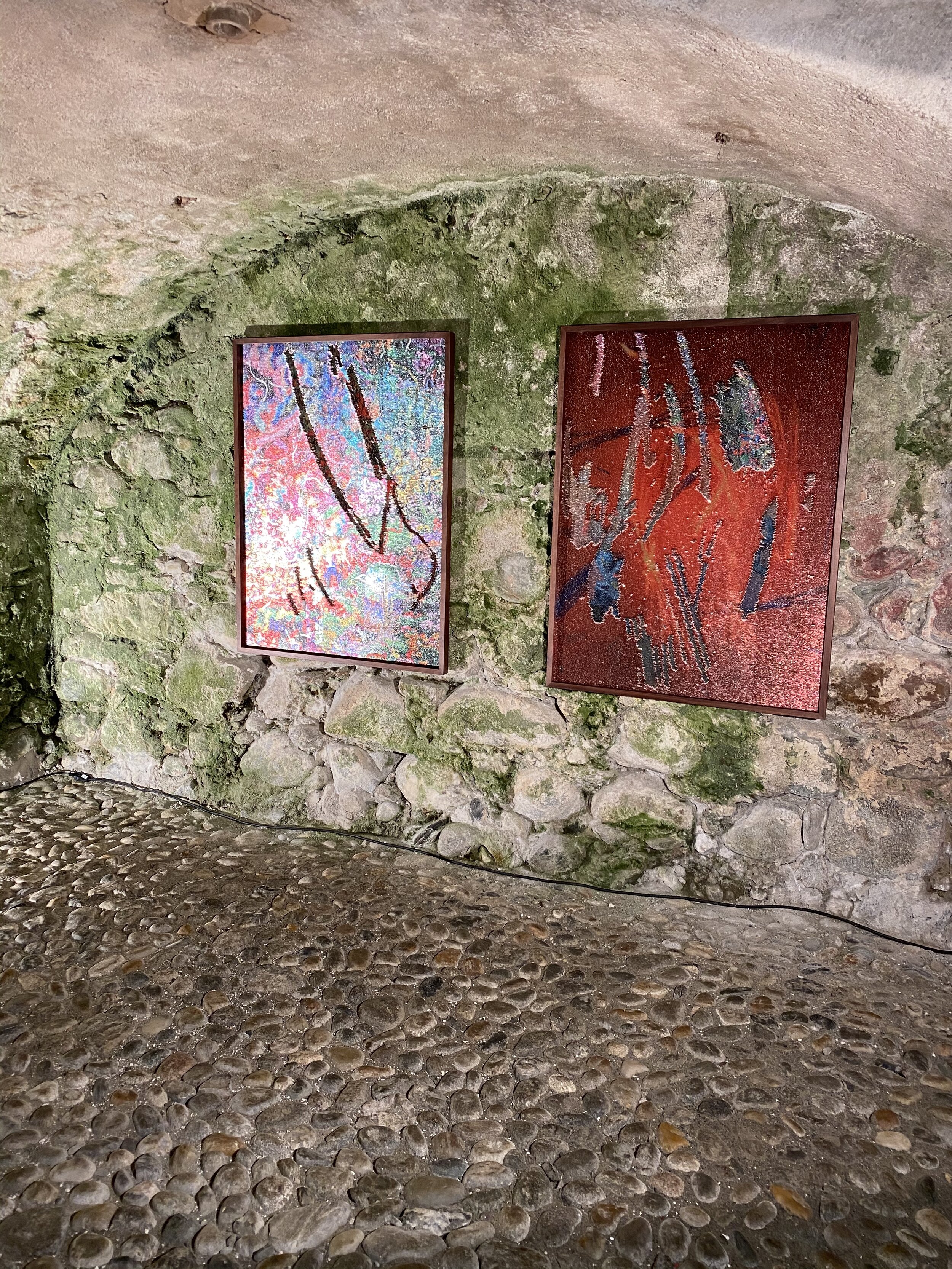
Stalla Madulain, Olga Titus, 2019, both : Untitled, Print on Séquin / Paillette Fabric.
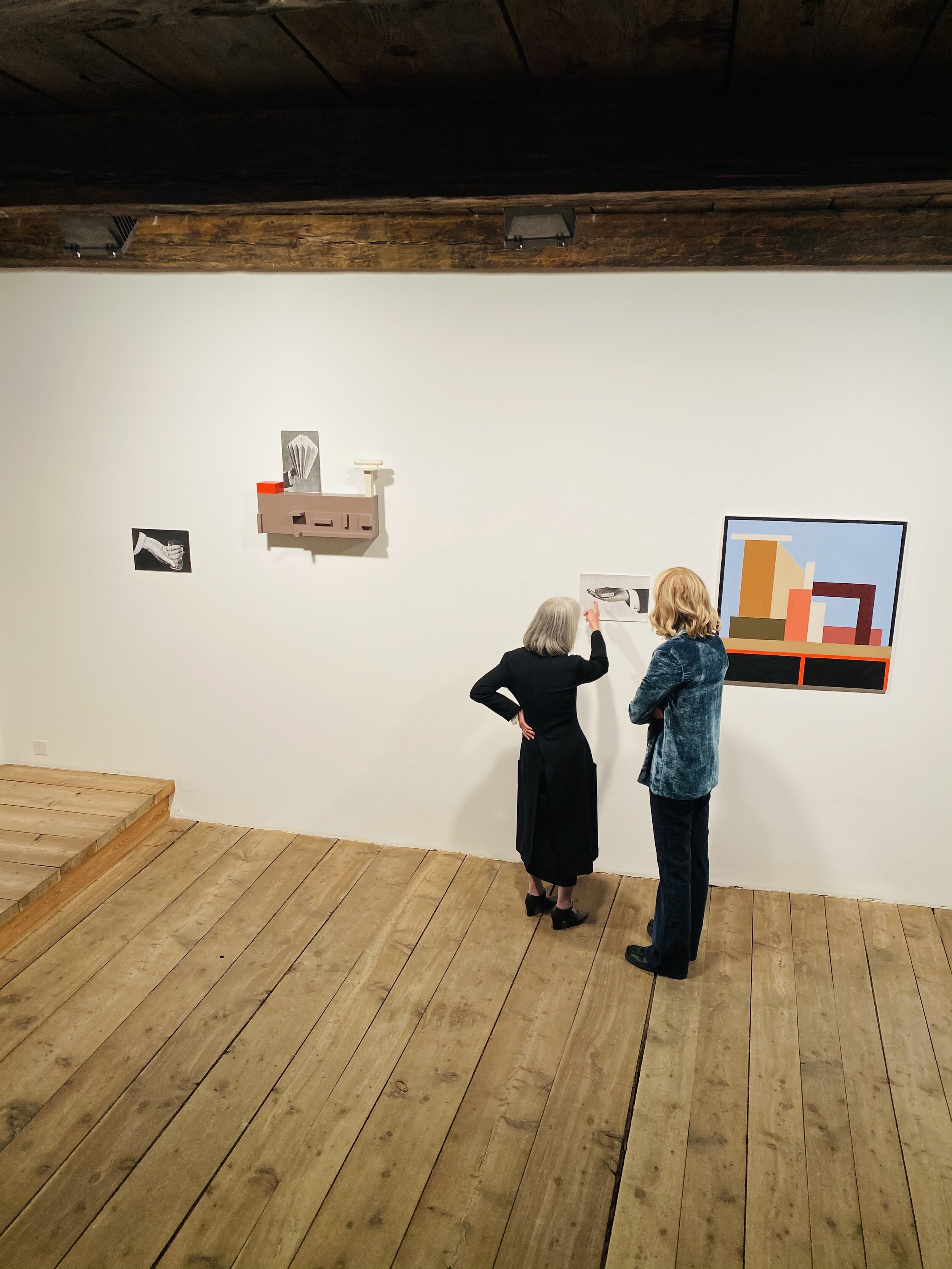
The Gallerist Monica de Cardenas and the Artist CHUNG EUN-MO discussing the exhibition "Les Jeux de Mais".
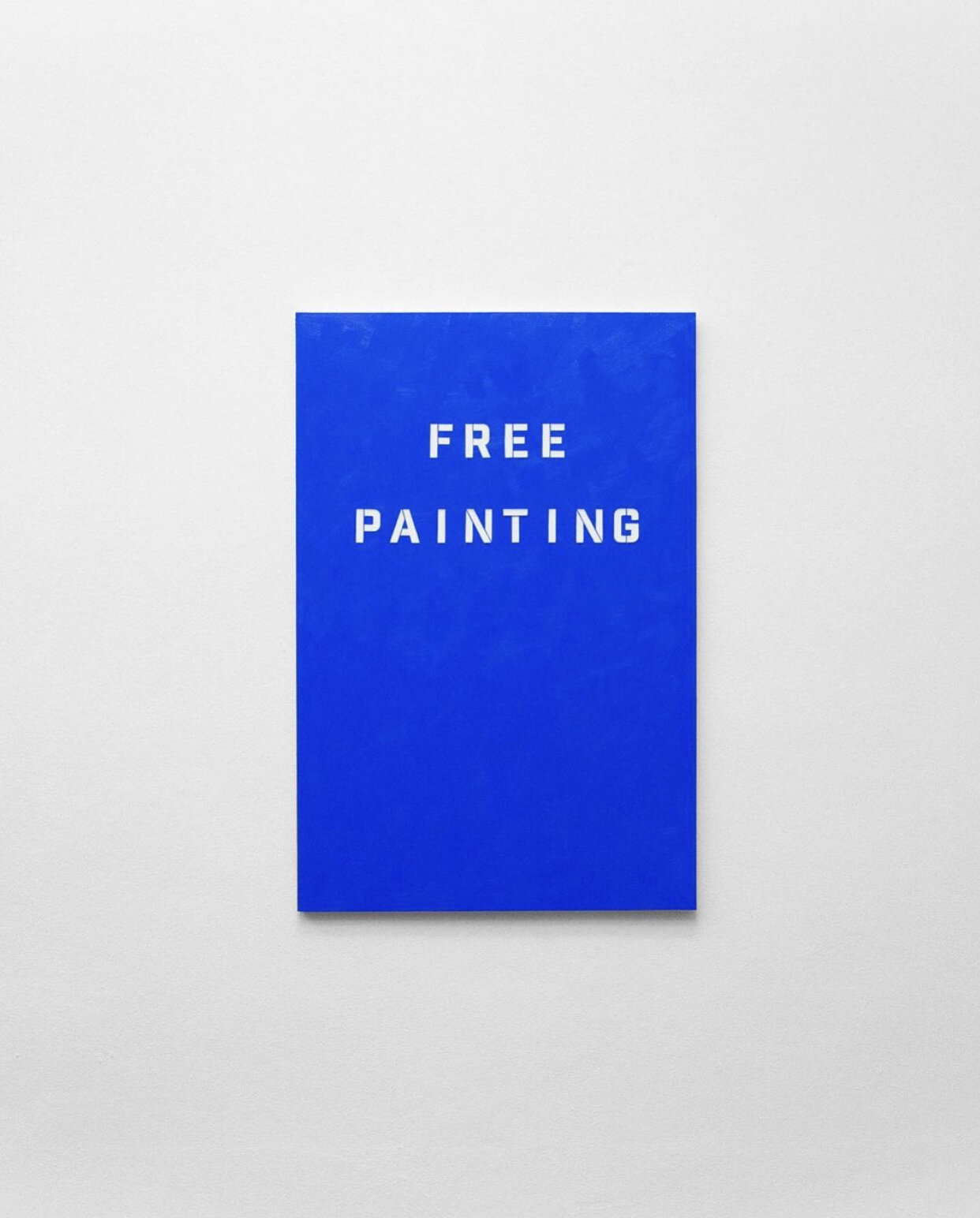
Galerie von Bartha, John Wood & Paul Harrison, Free Painting, 2020.
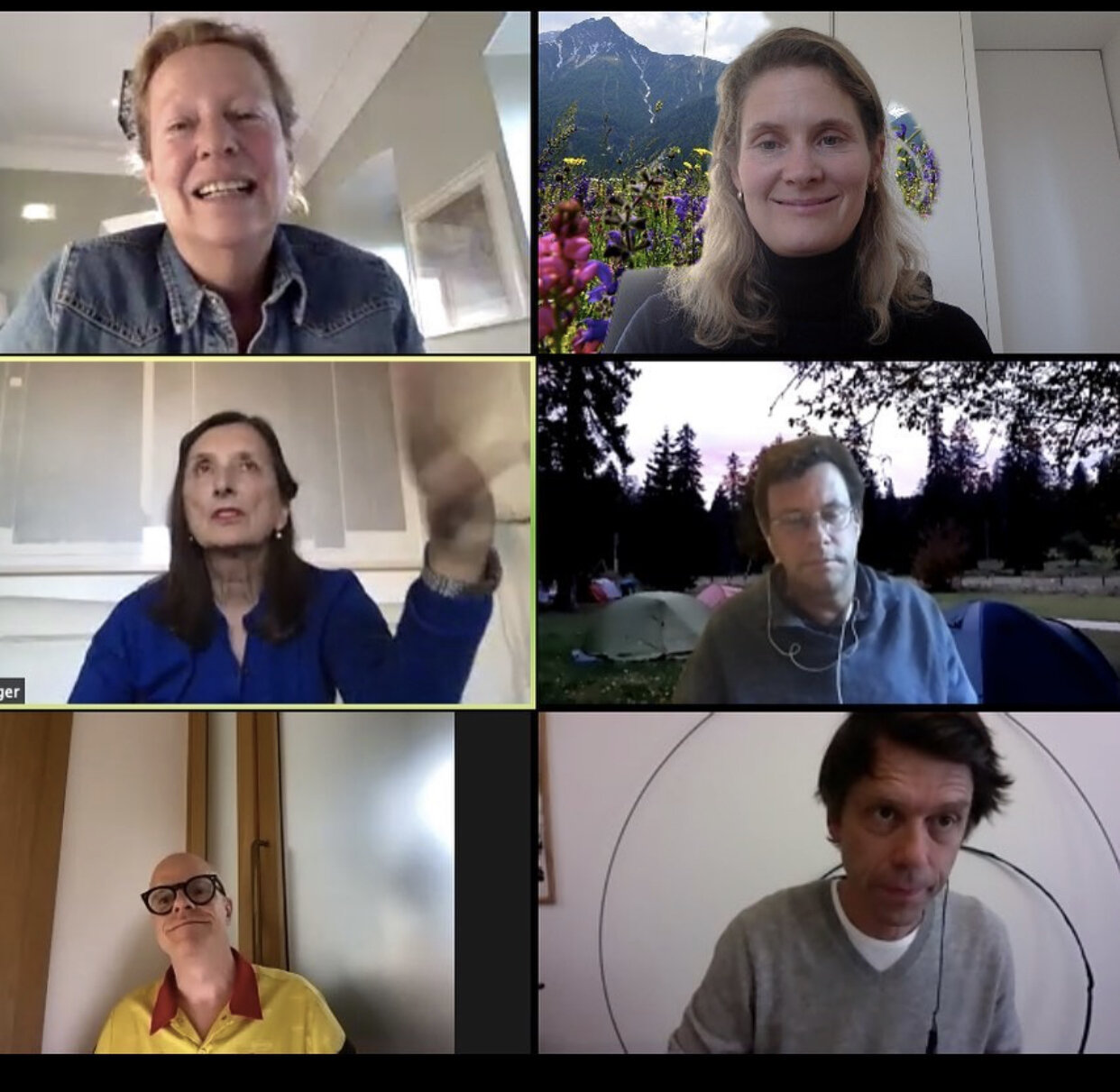
The Engadin Art Talks in the Making: They are a yearly Conference about Art happening every End of January in the nearby pittoresque village of Zuoz. This Year for the first time it will be streamed. (The Organisors: f.l.t.r: Initiator Cristina Bechtler, Director Katharina de Vaivre, Bice Couriger, Philip Urpsrung, HUO & Daniel Baumann.)
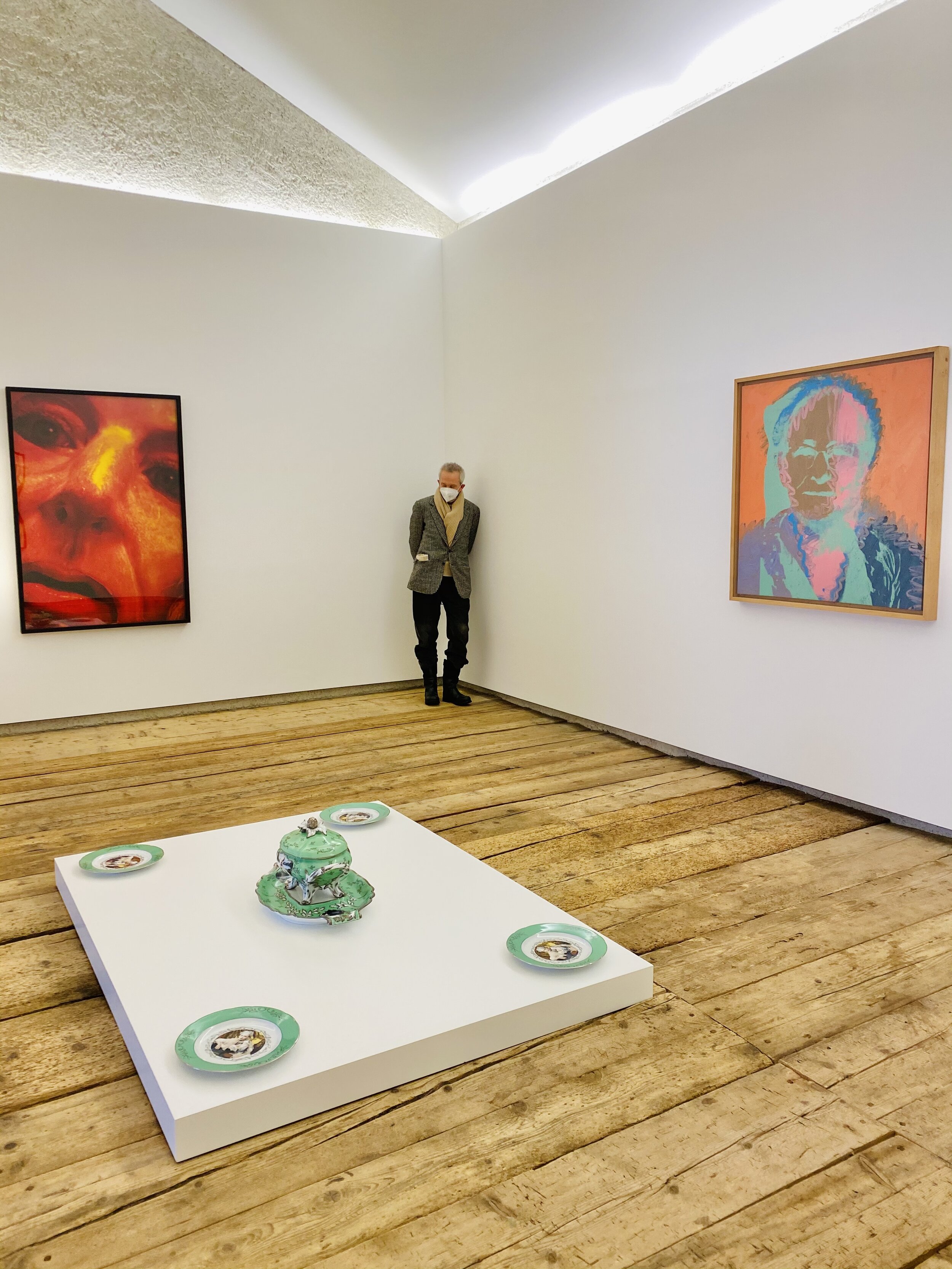
Dear Dino Zevi in his Gallery 107 S-Chanf in his current show, a dialogue between Cindy Sherman and Andy Warhol.

Hotel Castell Zuoz- James Turell, Skyspace "Piz Uter", 2012.
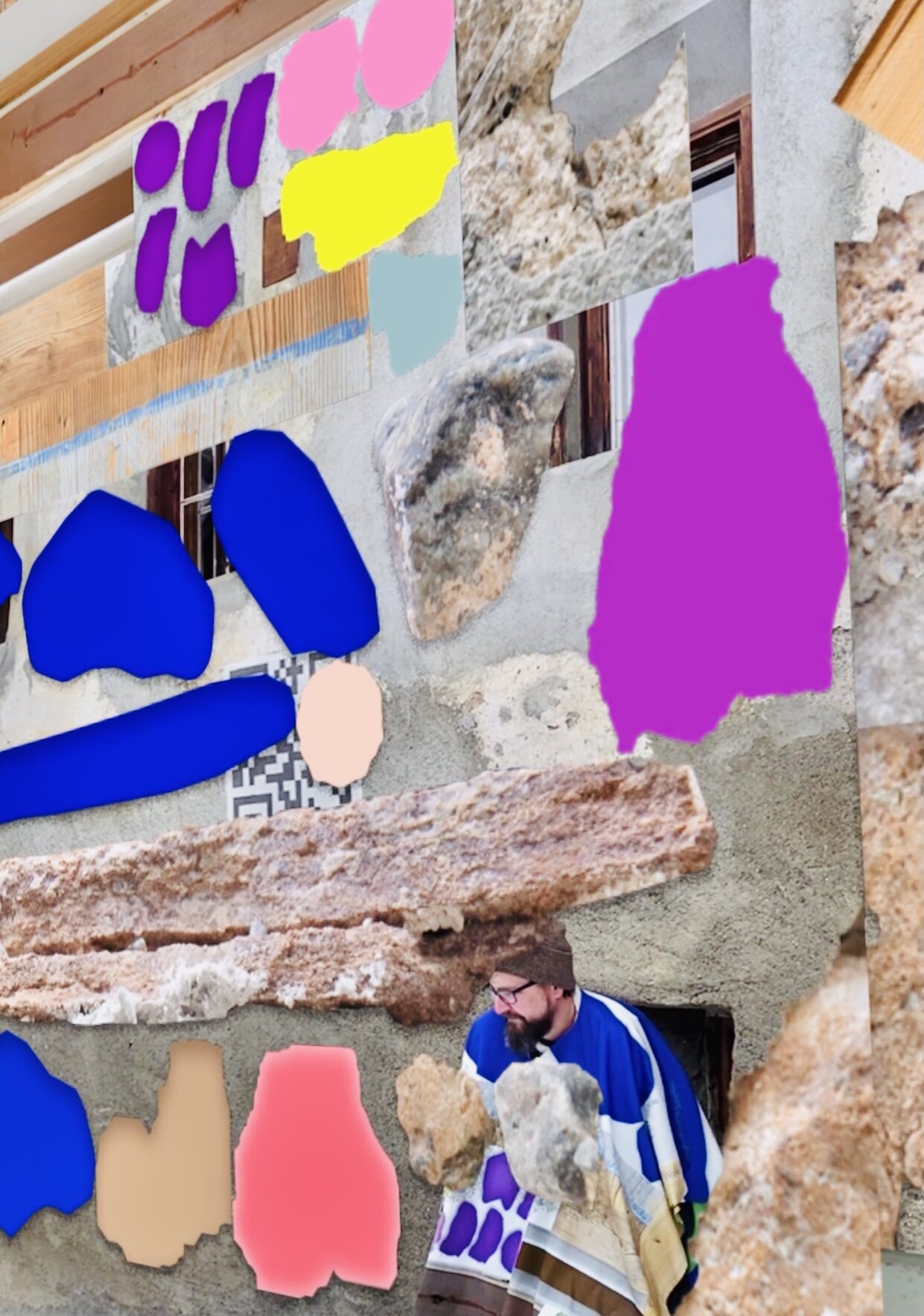
Somalgors74 – a Digital Sgraffito as an interactive performance by Somalgors74 in colllaboration with The Rodina.
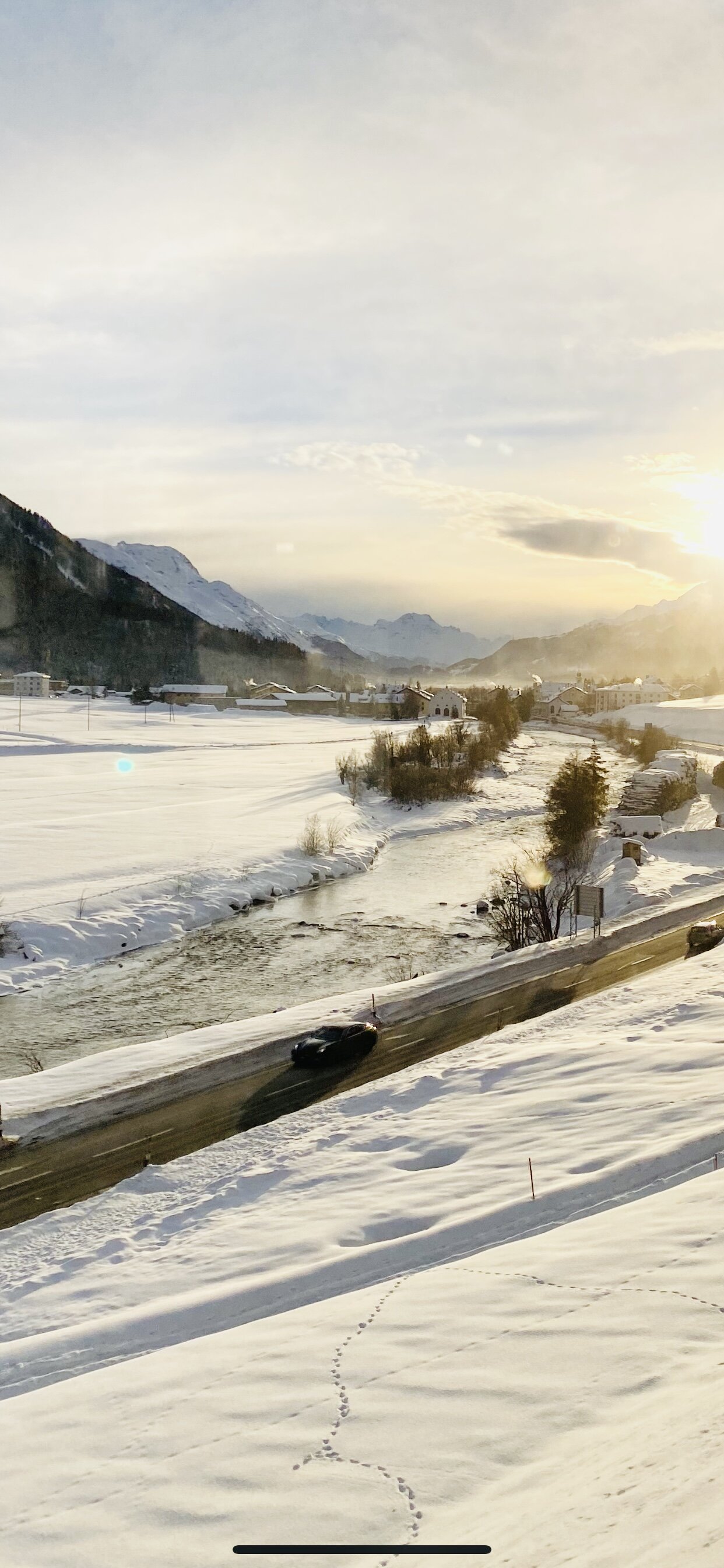
The "Slow Art Experience" requires time, to let the soul hang out loose and to enjoy the landscape while sitting on the train traveling to St.Moritz or between the villages.
Corona Museum Bench, by DALINI, drawn by Dan-Felix Paraschiv.
DALINI’s collectible, "Corona Museum Beach", acts as a materialization of our artsy-filled, corona memory in Engadine.
The art world within “St. Moritz – Engadine” has been a well-kept secret, only recently revealing parts of itself throughout the past few years.
The region around St. Moritz has so much art to discover! Each season is packed with high-end exhibitions and quite a few jewels behind closed doors in private collections, as well as a lot of public art. Visitors can experience the art of St. Moritz by taking one of two paths: by the “Art-Marathonist-Way” or more casually by the “Art-Savourer-Way”.
Art-Marathonist-Way (aka. The sporty way to hit all of the spots): Adrenalin addicted individuals, who need more than six vernissages a day to feel alive can feel comforted that St. Moritz is truly a post-urban paradise! Although, it may feel like a lost village in the middle of the Alpes far from any metropole, the cultural and sportive lifestyle that St. Moritz offers outshines most middle-range cities. With over 60 galleries and seven 5-star hotels to stay at throughout the region, you’ll be sure to fill your art agendas from December through February.
An Art-Savourer, on the other hand, will want to relax and fully enjoy the fairy-tale, snow covered landscape and rid yourself of urban stressors. If that sounds like you, St. Moritz is also the perfect place to empty your mind and dedicate yourself to seeing the art shows without any pressures or appointments that could derail your time to discover freely.
This way of experiencing art is known as “Slow Art”; a concept widely promoted by the lovely Grazyna Kulczyk, who chose not to build her new private museum in the center of some megalopolis a few years back, but rather behind a wall of mountains you need to pass through first, in order to reach a tiny, Lower-Engadin Swiss Village of only 219 inhabitants.
Peacefully embedded in the valley, the Muzeum Susch opened to the public in January 2019 and awaits its visitors who need to do more than simply stumble into it on their 30-minute lunch break.
For visiting an exhibition at Muzeum Susch, one needs to truly want it! You must plan and travel at least 45 minutes from St. Moritz (2.5 hours from Zurich and about 3.5 hours from Milan). The experience of “Slow Art” starts as a pilgrimage to the art itself. Only then can you immerse yourself completely without the hassle of a pre-planned appointment or reservation.
Miroslaw Balk- Narcissussusch - 2018, site specific commissioned permanent installation. Muzeum Susch.
The slowed down rhythm of people on holiday is the very explanation why galleries are sprouting up in St. Moritz and the neighbouring villages. For an international gallery like Hauser & Wirth, with branches all over the world, it is a perfect place to meet up with their collectors and actually catch up while they have time.
Personally, I think “Slow Art” has blossomed now during the pandemic; many have been really creative in installing more art outside of gallery spaces.
So, what’s on right now in St. Moritz?
Salvo, Primavera, 2000, oil on canvas.
In St. Moritz, there are currently 5 major galleries amongst the smaller, high-end scene: Galerie Andrea Caratsch, Galerie Hauser & Wirth, Galerie Karsten Greve, Robilant+Voena and Vito Schnabel Gallery.
Unlike the four others who came to St. Moritz for its fertile art market, Andrea Caratsch is the only local one among the top gallerists. This winter, he staged three parallel exhibitions: George Condo, Salvo and the 25 year old Charlotte Leimer with “Sacred Relations.
Leimer’s first solo show, featuring her newest series of work begun during the Spring lockdown in Switerland, was sold out in the first few days of opening. Like a herd of cattle, 6 monumental works made of burlap canvases, self-built and self-framed, invite the viewer to dive into the deeply philosophical world of the young artist.
She had observed a herd of cows with their calves in the fields; tagged, fenced, ready to be milked or processed. Moved by the presence of unconditional love one often times amongst animals, Leimer’s series centers around this exploration and like the power of paint that binds the viewer to the artist, milk in abundance binds the mother to a child; a calf to the cow.
Charlotte Leimer, Infected, 2020, Detail.
Charlotte Leimer, Tagged, 2020, oil on burlap with wood construction.
Philip Guston at Hauser & Wirth St. Moritz.
Hauser & Wirth was bold enough to stage a solo show of Philip Guston, even in times of #BlackLivesMatter marches that have postponed similar exhibitions at other institutions.
Karsten Greve celebrates Louise Bourgeois. Proud to have been the first to exhibit Louise Bourgeois in Europe after her emigration to the USA, the Greve’s St. Moritz space is pleased to present her 3rd solo show, “The Couple” 2003, shines through the window and mesmerizes passers-by. This aluminium, hanging work beautifully depicts Bourgeois’ principal themes: humanity, birth and death, love and hate, the human body and sexuality. The suspended sculptures also have the capacity to spin in opposite directions, existing in a perpetual state of fragility and ambivalence.
Robilant+Voena’s remains closed, but Marco Voena teamed up with Oscar Humphries and the Damien Hirst Studio to place the sculpture “Monk” 2014 on the frozen lake. Earlier in the planning, it was supposed to be part of a greater Damien Hirst show – in these unpredictable times it is also the faith of this upcoming show. Two more sculptures will be installed on the frozen lake, plus two more in additional outdoor areas.
Karsten Greve celebrates Louise Bourgeois, The Couple, 2003.
Marco Voena of Robilant+Voena teamed up with Oscar Humphries and the Damien Hirst Studio to place the sculpture Monk, 2014 on the frozen lake.
Galerie 10, a smaller gallery, steps on the international stage by collaborating with London’s JD Malat Gallery, a loyal VOLTA participant. Together, they present a group show including a diverse roster of their artists: Colombian abstract expressionist, Santiago Parra, the Ghanaian figurative painter, Kojo Marfo, as well as American abstract painter, Andy Moses and Turkish sculptor Hande Sekerciler.
Conrad Jon Godly is welcomed home, as JD Malat’s represented artist is originally from the nearby area. Godly explores ways between painting and the three-dimensional by celebrating the superlatives of the impasto.
Collaboration of Galerie 10 and JD Malat Gallery featuring Santiago Parra, Kojo Marfo, Andy Moses, Hande Sekerciler and Conrad Jon Godly.
Conrad Jon Godly, Detail of Nevertheless 27, 2020.
Vito Schnabel shows his father, Julian Schnabel, Trees of Home (for Peter Beard).
One of the most valuable visits is to the local virtuosic photographer, Daniel Meuli.
Over the past few years, Meuli developed not only a technique, but also a range of studies, which are unique in genre. With his own self-made camera obscuras, he captures the artistic values of contemporary photography often lost through the modern use of smartphones and optimization tools.
Daniel Meuli, photogram of a Drop of Water from the St. Moritz Lake, Diptych, 2020.
Daniel Meuli with one of his self-constructed immense camera obscuras.
Daniel Meuli, How does the rain break?, 2020.
Sometimes Meuli reflects for days about whether the wind and light conditions are just right, as he only has a single shot. The camera obscura must be constructed in size, depending on the format and dimensions of the print, which results in a wide range of self-built camera from teeny-tiny to the size of a truck. After meticulously analyzing the consistence of snow in 2019 and lark needles in 2020, this Winter, Meuli adventured himself in decomposing the patterns and beauty of waterdrops.
Interestingly, the art scene does not limit itself to the obvious and exposed key players of St. Moritz, but moreover exists in spaces where an untrained eye doesn’t always expect it. This mysterious art gray area are the renovated private homes old Engadine and mountain-style exhibition spaces that pride themselves on being anti-white-cube; they cluster in and around Madulain-Zuoz-S-chanf and Ardez.
The pioneers of these anti-white-cube galleries were Elsbeth Tschudi and her deceased husband, Ruedi Tschudi. They have been exhibiting art in Zuoz since 2002, after renovating an old house. The artwork they show embeds itself beautifully into the raw materials of the architecture. For many, a stop at Galerie Tschudi is specifically marked in their calendars when visiting the Engadine. This Winter, the gallery staged the first show of South African artist, Kemang Wa Lehulere, which Tschudi newly represents.
Kemang Wa Lehulere’s “Where Did the Sky Go?” has an unmistakable message and allows the viewer to look into a dystopia more reflective of modern times than is comfortable for some. Many South African artists are bound together in the continuous revolt against current politics and desire for a better and fairer future, as well as the remembrance and condemnation of what happened during the Apartheid.
In addition, the use of certain materials and found objects act as allusions to issues great and small, like Kemang Wa Lehulere use of tires. The tire, a literal representation of equipment kids used to play in the township where he is from, also represents much deeper criticism of the silencing of the country’s atrocities on its citizens. In the 1980’s, the regime would use “Necklacing” to set examples of anti-regime spies and dissidents. The rubber would melt after being dosed in gasoline and set on fire around an individual and impossible to extinguish.
Kemang Wa Lehulere, Dog of Orion, 2020, at Galerie Tschudi.
The dialogue between the works of Nathalie Du Pasquier and Alessandra Spranzi in their current Winter show, complete each other and generate new meanings, new poetry, new shadows. It is, as if one starts a sentence, that the other continues and that the observer should end, as if one hand points to the other, points to the game. ”Hand Games”.
Mirko Baselgia, Supercurtis, Giustrar, 2020, recycled tetra pack beverage cartons on cotton dyed with bethroot.
Stalla Madulain interior with Mirko Baselgia, Supercurtis, Giustrar, 2020.
The Stalla Madulain, an old 500-year-old barn turned gallery in 2014, has now established itself as a must-see when around, showing mainly young Swiss artists with a connection to the local area. When light shines through its filigree wooden windows, the stable seems to come alive and politely presents to you its jewels. This Winter, Swiss artist, Mirko Baselgia, known for his gentle work with local materials picked from nature, occupies the center stage on the upper floor. Swiss artist, Olga Titus, conquers the center and lower levels of the barn embellishing it with her unique works on paillette fabric, as if she wanted to dress up the little stable. In fact, the Dior fashion house has already become enchanted by her work, collaborating on a paillette Olga Titus X Dior Lady Dior Art Bag.
Olga Titus, Untitled, 2019, print on sequin / paillette fabric.
Olga Titus X Dior Lady Dior Art Bag
Von Bartha: “Words Made of Atoms”, John Wood & Paul Harrison.
We need to laugh and feel entertained like never before as well as be subtly guided into philosophical and ontological reflections: Are words made of atoms? Although the intuition would promptly say yes, isn’t it, that words are at least, if anything, made of atoms? Aren’t they either a juxtaposition of letters or a momentum of sound? Since they began working together in 1993, John Wood & Paul Harrison’s play with words have ranged from all depths of absurdities to genius. Serendipitously, they’ve managed to bring back sense and meaning to spaces where it was felt there was none left; they ought to conceive an “Encyclopedia of Nonsense”.
John Wood & Paul Harrison, Some words on a wall, 2020, Vinyl and Aluminium.
John Wood & Paul Harrison, Demo tape, 2020, 8’57” / 4K / Single channel / 16:9, Edition of 5 + 2AP.
It is a poetic show that outgrows the wall of some minds and of the physical space of the gallery. Indeed, some materialized ideas began to wander on nearby walls outside of the gallery. A much-appreciated artsy scavenger hunt outdoors, in these times of misanthropy of closed spaces.
107- S-chanf: Cindy Sherman X Andy Warhol.
What a wonderful show at Dino’s. Through the dialogue between Cindy Sherman and Andy Warhol one realizes how much putting on masks (and wigs) played a major role in Andy Warhols’s life. On the right side, a painting of Andy’s mother, Julia Warhola, in 1974 (she had died two years prior).
Not only is that portrait of his mother one of the last paintings he realized at his famous studio at Union Square West, but usually Warhol produced on commission or on suggestion, though not for the painting of his mother. And by using his fingers to create it, this technique truly pays homage to the relationship of mother and child.
My dear friend who hides in the lower Engadine mountains.
“Sgraffito” is an ancient technique of scratching away layers of coloured plaster. One can obtain an alternative to frescos on house facades that stay for a few hundred years! As the technique gets rarer, an artist initiative established the goal to reactivate old traditions in a way that suits todays millennials.
Curdin Tones, the founder of the Somalgors74 initiative, puts QR codes on facades and programmed the app FATSCHADAS. The app allows you to experience virtual content on the facade of the cultural initiative Somalgors74 in Tschlin, allowing you to visualize contemporary sgraffitos on your phone. This current project is a result of a collaboration with the artist duo The Rodina. To me, it is a really precious practice saving old traditions from extinction.
Text and images: Carolin A. Geist
To experience St. Moritz and the Engadine area, connect with Carolin at @carolin.a.geist
Follow @kammaleki and @voltaartfairs for more art insights.
Follow Kamiar’s monthly travel report for insights on art and gallery weekends where he meets with VOLTA exhibitors, artists and collectors internationally! Sign up to our newsletter and follow our social channels to stay up to date with everything VOLTA and be the first to receive monthly reports and blog posts.




